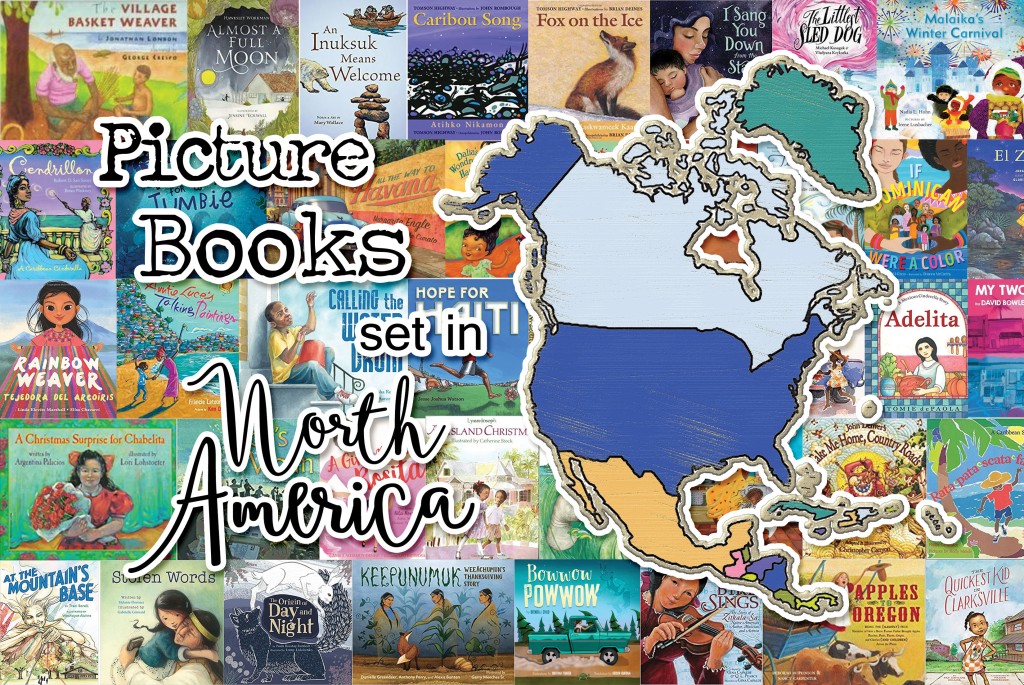
This section includes picture books from North America and Central America as well as books about Native American tribes from throughout North America.
Summaries to follow as we read each of the titles, and as we read I will also notate whenever a book is written or illustrated by someone from that country.
Antigua and Barbuda
suggestions?
Bahamas

Kobee Manatee: A Wild Weather Adventure by Robert Scott Thayer, illustrated by Lauren Gallegos (2015)
Kobee, the manatee, wants to make a surprise visit to see his sister who lives in the waters off of the Bahamas. He will have to travel from the waters around Florida. He travels off with two friends, a crab and seahorse, and explains what he sees to them as they go. They pass through a hurricane and finally make it to the Bahamas.
Barbados

Bicycle from Bridgetown by Dawn C. Thomas, illustrated by Don Miller (1975) **(author spent time as a child in Barbados)**
Edgar loves watching the Barbados cycling team as they make their way through the streets of his neighborhood. He dreams of one day having his own bike.

Emerald Blue by Linden
Belize

Cave Boy: Barefoot Adventures of and Island Child by Wagh

Night the Moon Fell: A Maya Myth by Mora

Village Basket Weaver by London
Bermuda

Terrific by Agee
Canada

Adventures of Riley Polar Bear Puzzle by Lumry

Almost a Full Moon by Hawksley Workman, illustrated by Jensine Eckwall (2016) **(author is from Canada)**
A little boy and his grandmother make soup together. Many people and animals show up to share the bottomless bowl of soup.

Amorak by Jessell
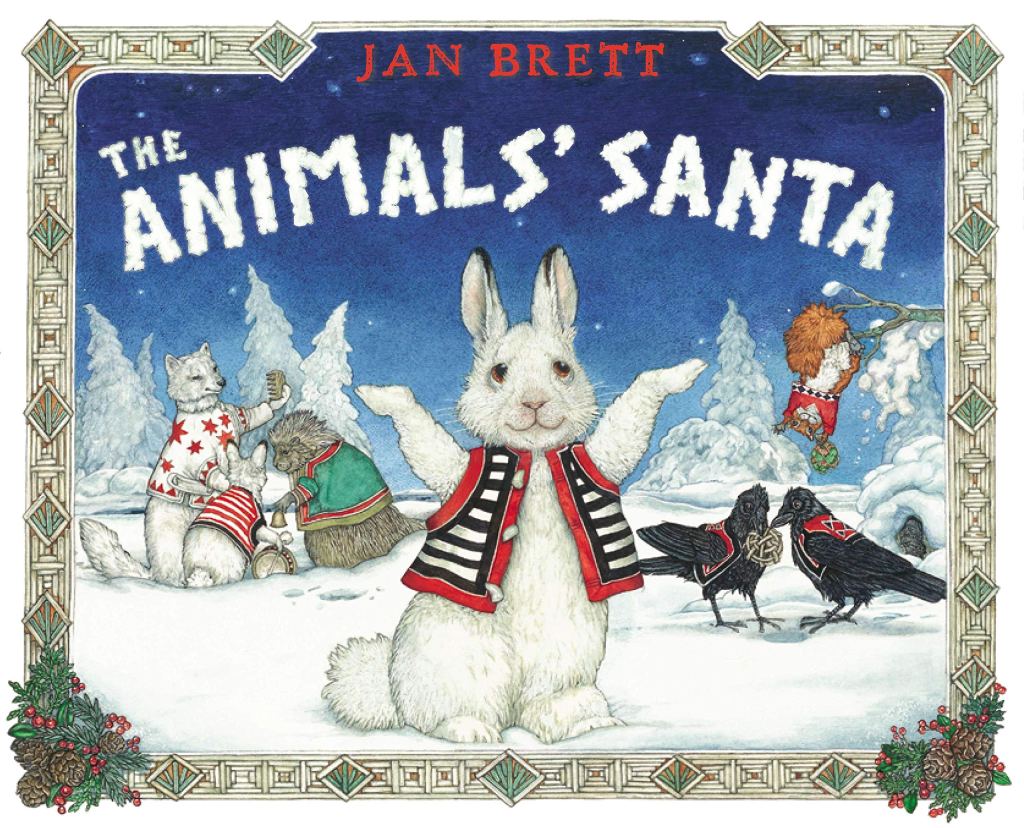
Animal’s Santa written and illustrated by Jan Brett (2014)
Little Snowshoe Hare wonders if there really is an Animal’s Santa. All the animals try to guess what kind of animal the Animal’s Santa would be if he existed. Little Snowshoe Hare decorates around his burrow for the Animal’s Santa and when little gifts start to appear from the sky the animals figure out who their Santa is.

An Inuksuk Means Welcome by Wallace

Arctic Adventures: Tales from the Lives of Inuit by Rivera

As Long as the Rivers Flow by Loyie

Aunt Olga’s Christmas Postcards by Kevin Major, illustrated by Bruce Roberts (2005) **(author is from Canada and illustrator moved there as a young child)**
Aunt Olga shares her giant Christmas postcard collection with her niece Anna year at Christmas time. While looking through the postcards together, Aunt Olga also tells Anna her memories growing up and they write poems together.

Bashful Bob and Doleful Dorinda by Atwood

Bella’s Tree by Russell

Brave Soldier by Debon

Cinderella Stores Around the World (Includes Micmac Tribe Version) by Meister

Canada All Year by Gürth
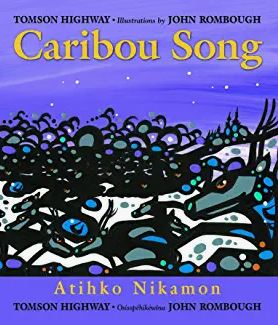
Caribou Song by Highway

Clancy with the Puck by Mizzoni

Dawn Watch by Pendziwol

Day with Yayah by Campbell

Dragonfly Kites by Highway

Encounter by Brittany Luby, illustrated by Michaela Goade (2019) **(author is from Canada and is of Anishinaabe descent, illustrator is of Tlingit descent)**
The author imagines a peaceful meeting between an indigenous man, in what is now known as Canada, and a European sailor. Animals around the two people marvel at how alike they are. At the end of the book is a note from the author discussing how she wanted to imagine how peaceful early interactions between the indigenous people of North America and European settlers and explorers could have been, instead of the violence that ultimately ensued and wishes to remind the reader that “violence is a choice.” There is also more information about French explorer Jacques Cartier and his arrival at Gaspé Bay in 1534.
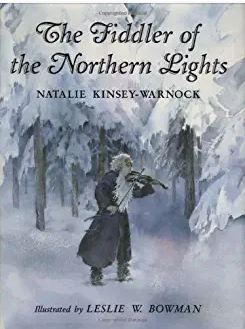
Fiddler of the Northern Lights by Kinsey-Warnock

Fishing with Grandma by Avingaq (2016)

Flying Canoe by Carrier
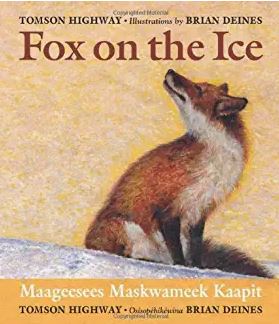
Fox on the Ice by Highway

From There to Here by Laurel Croza, illustrated by Matt James (2014) **(author and illustrator both from Canada)**
After moving across country a little girl describes all the differences between her old home in Saskatchewan and her new one in Toronto. But soon she meets a new friend, which she didn’t have at her old home.

Gift of the Inuksuk by Ulmer

Huron Carol by Wallace

I am Not a Number by Dupuis

I Know Here by Laurel Croza, illustrated by Matt James (2010) **(author and illustrator both from Canada)**
A girl and her family are moving from Saskatchewan to Toronto. She wants to draw a picture to help her remember living in Saskatchewan.

In My Anaana’s Amautik by Nadia Sammurtok, illustrated by Lenny Lishchenko (2019) **(author is from Canada and illustrator moved there as a young child)**
A young child describes the warmth and comfort from being carried on their mom’s back in the amautik.

I Sang You Down from the Stars by Tasha Spillett-Sumner, illustrated by Michaela Goade (2021) **(author lives in Canada and is Inniniwak (Cree)**
An expectant mother collects meaningful gifts for her baby as the months pass before the birth. At the end of the book is more information about the tradition of the Inniniwak and many Indigenous people to collect special and meaningful items before a baby is born.

Klondike Cat by Julie Lawson, illustrated by Paul Mombourquette (2002) **(author is from Canada)**
A boy and his father are planning to head north to Yukon as part of the gold rush. The boy wants to bring his cat, but the father says the trip would be too hard for a cat. The boy decides to sneak the cat into his bag. He worries his father will be angry that the cat has come along but she proves to be useful. At the end of the book is more information about the gold rush.
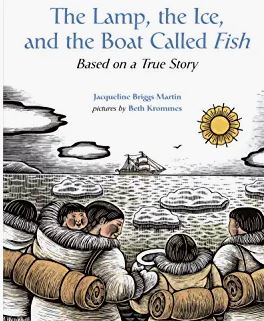
Lamp, the Ice, and the Boat Called Fish by Martin (2001)

“Little Burnt Face” in Cinderella Stories Around the World by Meister

Littlest Sled Dog by Kusugak

Malaika’s Winter Carnival by Nadia Hohn, illustrated by Irene Luxbacher **(author and illustrator are both from Canada)**
When Malaika’s mother marries a man from Canada, Malaika leaves the Caribbean and moves to Canada to be part of a new family. She misses carnival in the Caribbean and doesn’t feel like she fits in at school. She goes to a winter carnival and at first is very unhappy with how it compares to one in the Caribbean.

Marja’s Skis by Pendziwol
M is For Maple: A Canadian Alphabet by Ulmer
Mummer’s Song by Davidge
Music from the Sky by Gillard
Not My Girl by Jordan-Fenton
Old Mother Bear by Miles
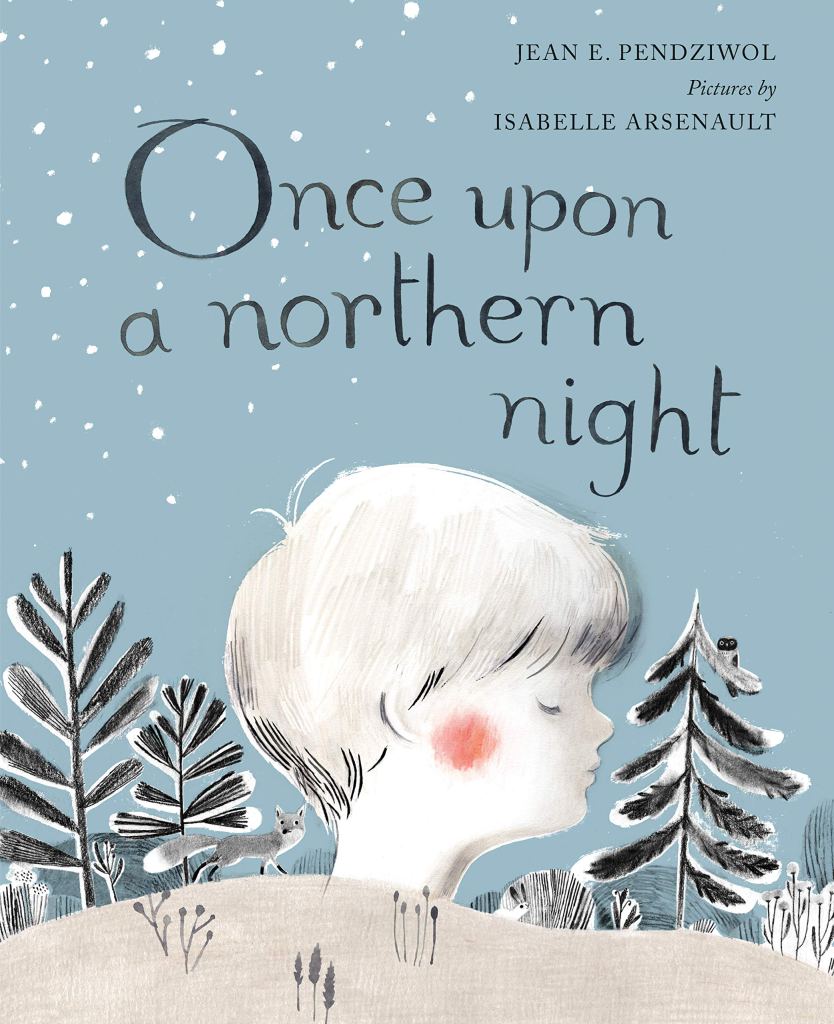
Once Upon a Northern Night by Jean Pendziwol, illustrated by Isabelle Arsenault (2013) **(author and illustrator are both from Canada)**
While a child sleeps snow fills the sky and soon the animals are busy during the night while the northern lights start to fill up the sky.

One Hundred Shining Candles by Janet Lunn, illustrated by Lindsay Grater (1988)
Lucy wants to make a special gift for her family who is too poor to buys presents this Christmas. She decides to make 100 candles to light their small cabin. She and her brother have a little mishap making the candles, but in the end, even though they don’t make 100, the feeling their family gets from the candles is worth 100 shining candles.
Orphans in the Sky by Bushey

Oscar Lives Next Door: A Story Inspired by Oscar Peterson’s Childhood by Bonnie Farmer, illustrated by Marie Lafrance (2015) **(author and illustrator are both from Canada)**
A little girl tells of her neighbor Oscar, a boy who loves music and plays both the piano and trumpet. One day Oscar gets sick with tuberculosis. When he gets better he doesn’t want to speak and is sad he doesn’t have enough lung capacity to play the trumpet. At the end of the book is more information about Oscar Peterson and the Little Burgundy Neighborhood.
Paddle to the Sea by Holling
Patchwork Path by Stroud
The Pencil by Avingaq (2019)
Promise is a Promise by Munsch
Rabbit and the Moon by Wood
Race the Wild Wind: A Story of the Sable Island Hosres by Markle

Race the Wild Wind: A Story of the Sable Island Horses by Sandra Markle, illustrated by Layne Johnson (2011)
An account of how the first of the Sable Island horses may have wound up on the island and what that first year may have been like for the horses that were used to living in barns. At the end of the book is more information about the Sable Island horses and horses in general.
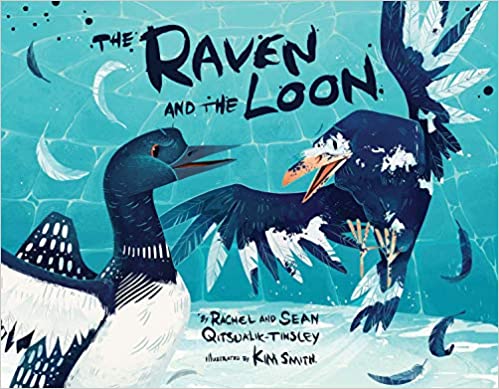
Raven and the Loon by Rachel and Sean Qitsualik-Tinsley, illustrated by Kim Smith (2013) **(authors and illustrator are all from Canada)**
Originally both Raven and Loon are all white. Raven finds the plain white color of his feathers to be really boring. Raven offers to sew a beautiful new coat for Loon and when he is done Loon tries to make a coat for Raven, but he is too wiggly so it doesn’t turn out like he wanted.
Raven: A Trickster Tale from the Pacific Northwest by McDermott
Raven Brings Back the Sun by Barchers
Red Sash by Pendziwol
Salmon for Simon by Waterton
Seal Oil Lamp by DeArmond
Shi-Shi-Etko by Campbell
Shin-chi’s Canoe by Campbell

Sky at Nighttime by Laura Deal, illustrated by Tamara Campeau (2019) **(Both author and illustrator are from Canada)**
Nighttime is so beautiful, especially in the far north with the Northern Lights and twinkling stars in the clear sky. At the end a mother is putting her child to bed and her song mixes with the beauty of the night sky.
Taíno Tales:The Secret of the Hummingbird by Weber (2020)
Take Care Little Bear by Jo
Three Snow Bears by Brett

T is for Territories: A Yukon, Northwest Territories, and Nunavut Alphabet by Michael Arvaarluk Kusugak, illustrated by Iris Churcher (2013) **(author born in Canada and illustrator now lives there)**
Learn about the Northwest Territories in this alphabet book which includes facts on each topic covered.
Nighttime is so beautiful, especially in the far north with the Northern Lights and twinkling stars in the clear sky. At the end a mother is putting her child to bed and her song mixes with the beauty of the night sky.
Town Is By the Sea by Schwartz (2017)
Walk on the Tundra by Ziegler
Whale Brother by Steiner
Whale Snow by Edwardson (2003)
When We Were Alone by Robertson
Wild Berries by Flett
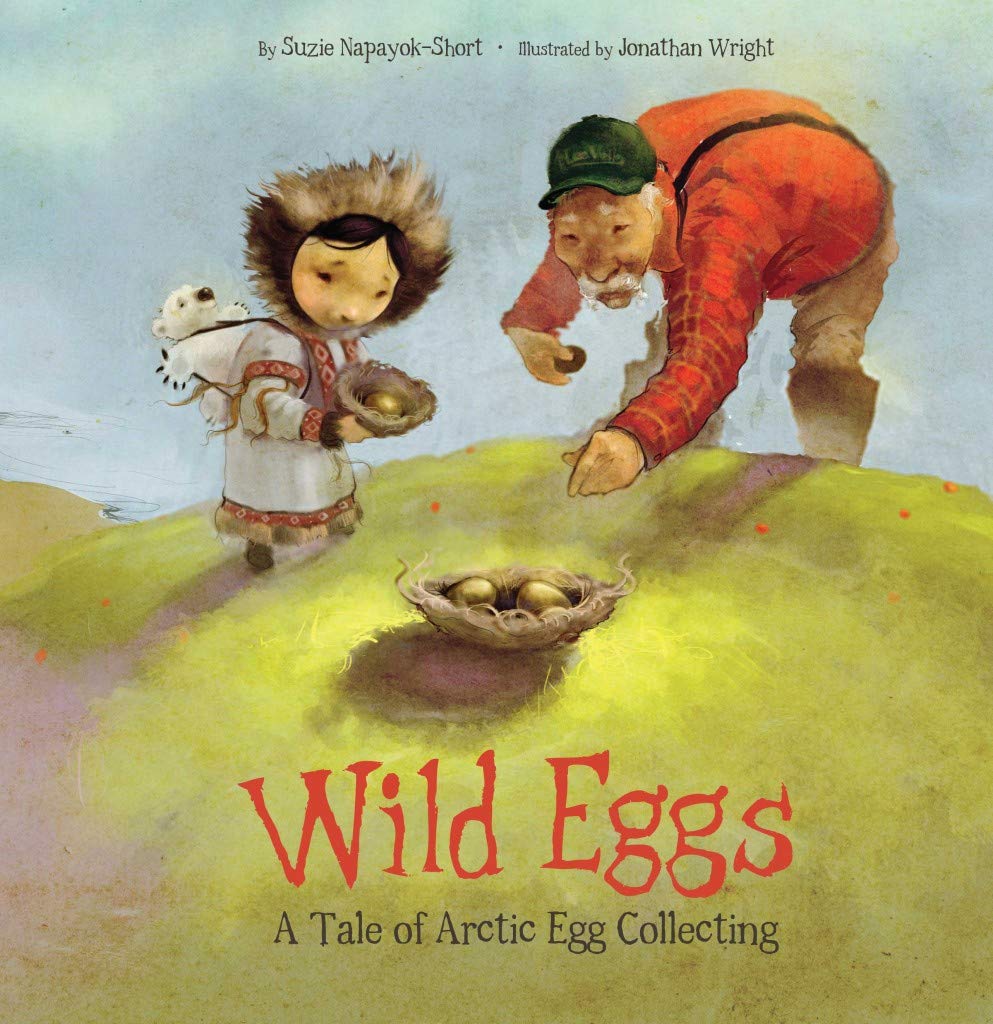
Wild Eggs: A Tale of Arctic Egg Collecting by Suzie Napayok-Short, illustrated by Jonathan Wright (2015)
**Author is from Nunavut Territory and the illustrator lives there as well**
Set it the Nunavut territory, Akuluk is going to visit her grandparents who live there. When Akuluk notices the unusual looking eggs at breakfast, her grandparents invite her to join them in collecting wild duck eggs on a nearby island. Her grandfather teaches her the rules for how to collect eggs and then back home Akuluk learns how to test if the eggs are good to eat and which are better for baking with.
Caribbean Islands – general

Caribbean Dream by Isadora
Caribbean Journey from A to Z by Picayo

Cendrillon: A Caribbean Cinderella by San Souci, illustrated by Brian Pinkney (1998)
When a little girl’s mother died, she left her daughter a wand that could only be used to help someone the girl loved. When she is older she works as a washerwoman for a woman, who after dying in childbirth entrusts the care her daughter Cendrillon to the girl. Cendrillon’s father remarries and the stepmother favors her own daughter over Cendrillon. Cendrillon is made to do all the cleaning and washing. One day Cendrillon comes to the washerwoman sad because she wishes she could go to the ball. The washerwoman finally has someone she loves to use her magic wand on. At the end is a quick author’s note about the background of the Cendrillon story.

Hue Boy by Rita Phillips Mitchell, illustrated by Caroline Binch (1993)
Hue Boy is one of the smallest children on the island so his mother suggests he eat more fruits and vegetables to grow big and strong. When he still doesn’t grow, a neighbor suggests stretching exercises, but they have no effect either. Various people suggest different methods to help him grow. But it’s not until a special person arrives on a ship that Hue Boy feels tall despite his small size.
Jammin’ Geography Caribbean Cruise by Roberts
Jimmy the Greatest by Buitrago
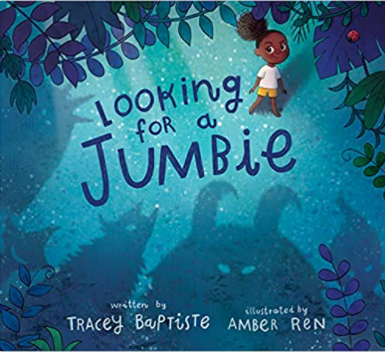
Looking for a Jumbie by Tracey Baptiste, illustrated by Amber Ren (2021) (**Author was raised in Trinidad)**
At the beginning of the book is some background information about Jumbies, which are like fairies or trolls from Caribbean folk lore. Naya tells her mother that she is not afraid of Jumbies. In the style of “We’re Going on a Bear Hunt” Naya goes out into the night looking for Jumbies, and after a short while starts to find some interesting creatures.
Rata-Pata-Scata-Fata: A Caribbean Story by Gershator
Costa Rica


After a While, Crocodile: Alexa’s Diary by Barr
Costa Rica ABCs by Cooper
Far-Flung Adventures of Homer the Hummer by Reynolds
Fernando’s Gift by Keister
Forest in the Clouds by Collard
Little Book of Sloth by Cooke
Morpha: A Rain Forest Story by Tennyson

Song of La Selva: A Costa Rican Rain Forest by Joan Banks, illustrated by Higgins Bond (1998)
High in the rainforest a tiny red strawberry poison dart frog lives in a bromeliad which has been where he lived since hatching as a tadpole. He is now a frog and ready to move out into the world. As he makes his way down from the tree tops he sees many different rainforest animals, before finally arriving on the rainforest floor. He finds a mate and they begin their own family. At the end of the book is more information about La Selva.
Tortuga Squad: Kids Saving Sea Turtles in Costa Rica by Burnham
Umbrella by Brett
When the Monkey’s Came Back by Franklin
Cuba

Adelaida: A Cuban Cinderella by Monnar

All the Way to Havana by Margarita Engle, illustrated by Mike Curato (2017)
A boy and his family are driving to Havana with a gift for a baby cousin. The car makes lots of rattling sounds and the boy and his dad do some last minute fixes to the engine. On the way to the city they see so many beautiful old cars. At the end of the book is more information about the old cars that are still running even in this day in Cuba.

Alicia Alonso Dances On by Rose Viña, illustrated by Gloria Félix (2021)
Alicia grows up in Havana, Cuba and loves going to dance class. She practices hard and eventually leaves to study in New York City. Her vision starts to fade and Alicia has several surgeries to try to improve her eyesight, but none fully restore it. She learns to dance again with blurry vision using her other senses. At the end of the book is more information about Alicia Alonso.
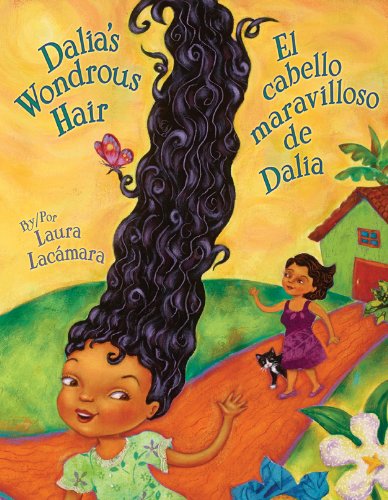
Dalia’s Wondrous Hair written and illustrated by Laura Lacámara, Spanish translation by Gabriela Baeza Ventura (2014)
While Dalia slept her hair grew very long and she woke up with a head of hair as large as a tree. She decides to decorate her hair with natural items like flowers and even mud. When her mom suggests washing the mud out Dalia isn’t ready. She wants her mom to guess the kind of tree her hair is. When it’s time to unwrap her hair there is a surprise waiting to come out. The book is told in English and Spanish and at the end there is information about Cuba.

Dog Who Loved the Moon by Cristina García, illustrated by Sebastià Serra (2008)
On her birthday, Pilar receives two special gifts, dancing shoes and a dog she names Paco. Pilar wants to dance with Paco but he only looks out of the window at the moon and feels sad.

Drum Dream Girl by Margarita Engle, illustrated by Rafael López (2015)
This story is based on the life of Millo Castro Zaldarriaga. Millo was a young girl growing up in Cuba at a time when only boys were encouraged to play the drums. She and her sisters form their own all girl band playing all different kinds of instruments with Millo, of course on drums. But her father says she cannot play the drums, he does find her a teacher who says Millo should be allowed to play for people. At the end is more information about Millo Castro Zaldarriaga. Author Engle is of Cuban-American heritage.

Good-bye, Havana! Hola, New York! by Edie Colón, illustrated by Raúl Colón (2011) **(Author is from Cuba)**
Gabriella has been living with her grandparents for a couple weeks while her parents are on a trip. She finds out she will soon be leaving her grandparents as well to join her parents in the US. Her parents left because of Fidel Castro’s government. She arrives in New York and things are so different, there is snow on the ground and the children speak English in school and the school food is different. At the end of the book is more information about the author’s experience emigrating to the US from Cuba when she was a little girl as well as information about Fidel Castro.

Mama Does the Mambo by Katherine Leiner, illustrated by Edel Rodriguez (2001) **(illustrator was born in Cuba)**
Sofia misses seeing her mama dance around the house all the time, after her father died. Her parents used to dance at carnival every year but she doesn’t know if her mama will dance this year. When she meets a new man it turns out he can’t dance. At carnival, mama surprises everyone with a very special partner to dance with.
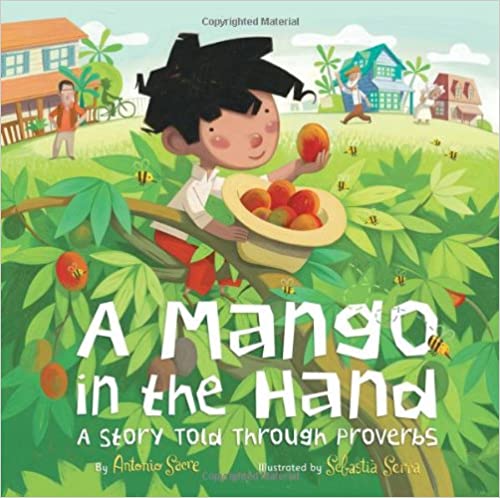
Mango in the Hand: A Story Told Through Proverbs by Antonia Sacre, illustrated by Sebastià Serra (2011)
Francisco is excited for his Saint Day. He goes to pick mangoes for his feast but is unable to get any because he is afraid of the bees buzzing around the tree. Advice in the forms of proverbs from his father, helps Francisco conquer his fear of bees.

Martina the Beautiful Cockroach: A Cuban Folktale retold by Carmen Agra Deedy, illustrated by Michael Austin (2007) **(author is from Cuba)**
Marina the cockroach is 21 days old and ready to get married. Her grandmother says to find the right husband she must spill coffee on his shoes since it will tell her how they will treat her when they are angry. All kinds of different animals show up hoping to propose to Marina. Which animal will be the best match for Marina?

Martí’s Song for Freedom by Emma Otheguy, illustrated by Beatriz Vidal, Spanish translation by Adriana Domíinguez (2017)
José Martí loves his land of Cuba but finds the slavery that is happening there horrible and begins fighting to end it. He is sent away from Cuba (the country was ruled by Spain at the time) for speaking out. He spends time in a work camp and then goes to New York City before returning to Cuba to help fight in the war for their independence from Spain. At the end of the book is more information about José Martí. The book

Papa Tells Chita a Story by Elizabeth Fitzgerald Howard, illustrated by Floyd Cooper (1995)
Chita looks forward to the time after dinner when her father tells her stories. She wants to hear his story about the time he was in the Spanish-American War and was sent to Cuba where he had to deliver an important message. He tells his story as a tall tale with Chita joining in. At the beginning of the book is more information about the Spanish-American War and the African-American regiments that fought in the war as well as information about the real Chita, the author’s cousin.

Road to Santiago by D. H. Figueredo, illustrated by Pablo Torrecilla (2003) **(Author is from Cuba)**
Every year, a boy travels with his family on Nocha Buena, the night before Christmas, from Havana to Santiago to visit his grandmother and the rest of his family. However this year is different as a war has started and the railroad tracks have been destroyed in the war. The family finds someone to drive them to the bus they need to catch and they manage to make it to his grandmothers house in time. The story is based on an event from the author’s childhood and has more information about Fidel Castro at the end of the book.

A Song of Frutas by Margarita Engle, illustrated by Sara Palacios (2021)
A girl loves visiting her Abuelo in Cuba where he is a fruit seller from a cart on the street. She also loves New Year’s Eve when everyone eats grapes for good luck. At the end of the book is more information about Spanglish, the author’s experience visiting relatives in Cuba, street vendors in Cuba, and New Year’s Eve celebrations in Cuba.
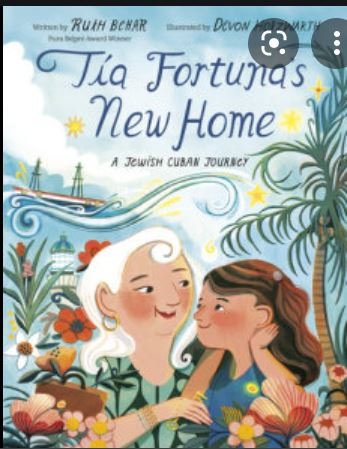
Tia Fortuna’s New Home: A Jewish Cuban Journey by Ruth Behar, illustrated by Devon Holzwarth (2022) **(author was born in Cuba)**
A girl loves visiting her Tia Fortuna and hearing stories about living in Havana, Cuba. Her aunt is a Sephardic Jew who came from Cuba to Miami when she is young. Now because her home is being torn down, Tia Fortuna is moving again and her niece is helping.
Dominica
Suggestions?
Dominican Republic

Anita and the Dragons by Hannah Carmona, illustrated by Anna Cunha
Gift of Gracias by Alvarez

If Dominican Were a Color by Sili Recio, illustrated by Brianna McCarthy **Author Recio was born in the Dominican Republic**
Recio celebrates the beauty in the shades of colors of not only all of the people who call the Dominican Republic home, but also the colors of the feelings you get from the people and places in the country.
Island Born by Díaz
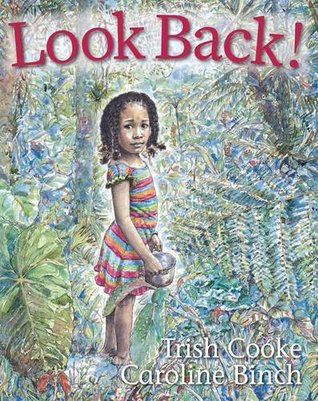
Look Back by Cooke (2015)

Secret Footprints by Julia Alvarez, illustrated by Fabian Negrin (2000) **Author grew up in the Dominican Republic**
The ciguapas are people who live in the water and have backwards feet. Guapa is a ciguapa who went too close to the houses of the people who lived on land and meets a boy. But she is forbidden from seeing him anymore otherwise the ciguapas might be discovered by the humans. When she ultimately is, Guapa learns that some humans are kind. At the end of the story is more information about the ciguapa legends and the author’s life growing up in the Dominican Republic.
El Salvador
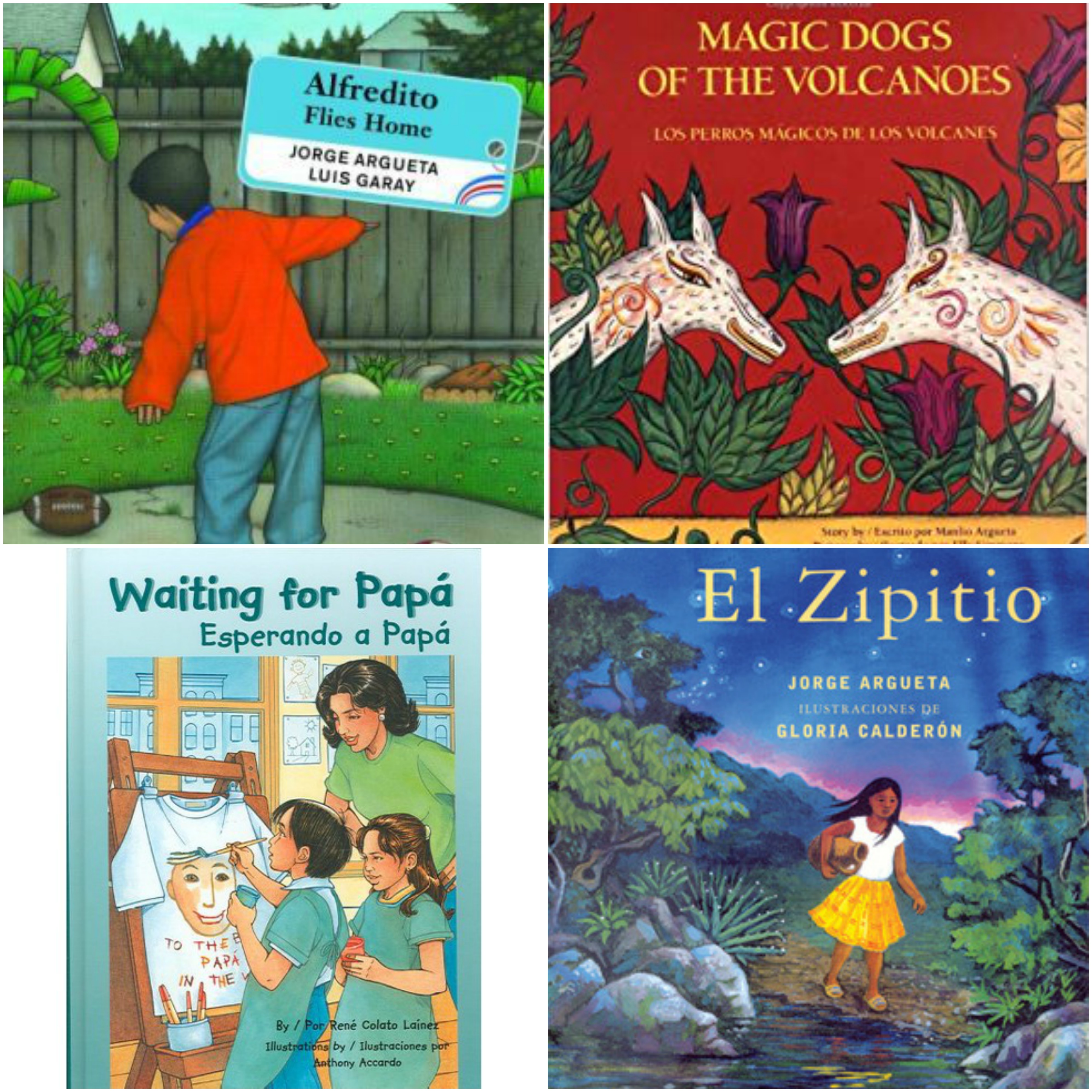
Alfredito Flies Home by Argueta
Magic Dogs of the Volcanoes by Argueta
Waiting for Papa by Laínez
Zipito by Argueta
Greenland

Call Me Ahnighito by Conrad
Grandmother’s Pigeon by Erdrich
Inunguak, The Little Greenlander by Palle Petersen
Nine Minutes by Shin
Grenada

Nutmeg Princess by Keens-Douglas
Guatemala


Abuela’s Weave by Omar S. Castañeda, illustrated by Enrique O. Sanchez (1993) **Author was born in Guatemala**
Esperanza is learning to weave from her Abuela. They plan to take their woven items, blankets and clothing, to the market to sell, but worry that no one will want to buy their handmade items instead of store bought items.
Elena’s Story by Shaw
Escape from Pacaya by Brasch (2013)

Abuela’s Weave by Omar S. Castañeda, illustrated by Enrique O. Sanchez (1993) **Author was born in Guatemala**

Iguana Beach by Kristine Franklin, illustrated by Lori Lohstoeter (1997)
Reina is excited to go to Iguana Beach with her cousins. Her older cousins can all swim in the ocean, but Reina is too young and has to stay on the sand. When she can’t resist the pull of the water any longer, she runs down the beach away from her cousins and uncle and finds a sheltered lagoon where she can swim too.

Juanita: The Girl Who Counted the Stars by Lola Walder, illustrated by Martina Peluso (2021)
Juanita lives in a village next to a volcano. She helps her mother bake and her mother is a weaver. When her mother gets sick Juanita tries to help finish some of her weaving and sewing projects but has trouble. At night she counts stars until she falls asleep and one night a star comes to give her assistance. At the end of the book is a note from the author about Guatemala and her inspiration for this story.
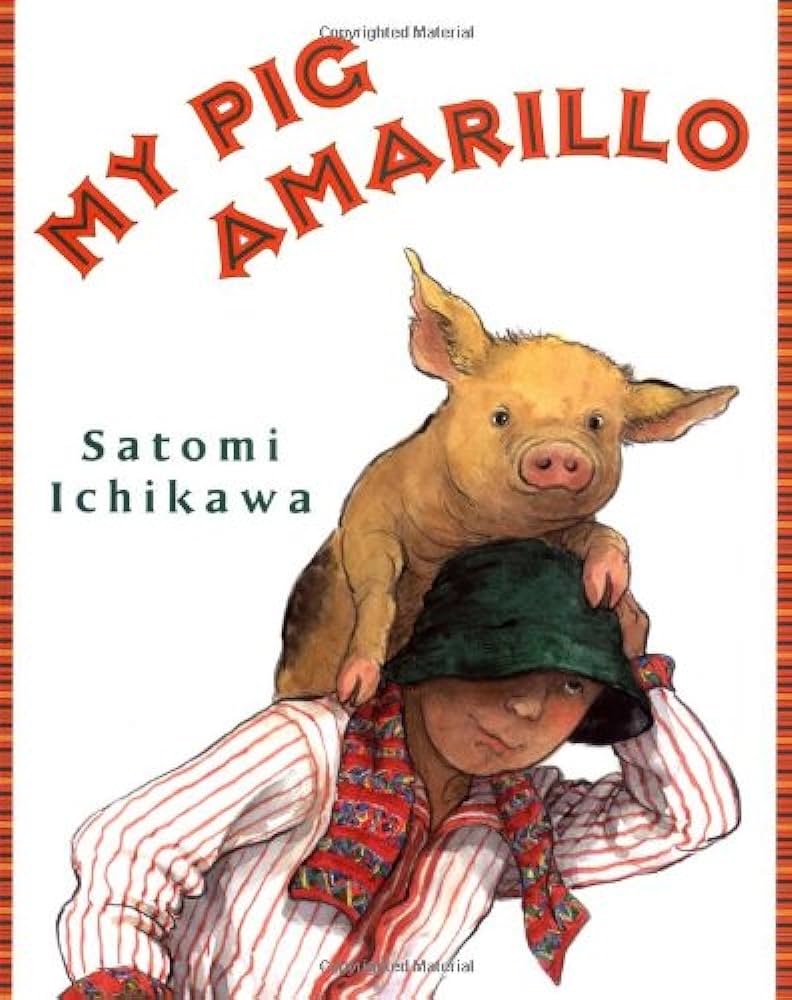
My Pig Amarillo by Satomi Ichikawa (2003)
Pablito’s grandfather brings him a baby pig as a gift one day. Pablito calls the pig Amarillo which means yellow. One day Pablito comes home and Amarillo is missing. On All Saint’s Day, Pablito makes a kite to send up a message to Amarillo to tell him he misses him and is looking for him.
Night the Animals Danced by Beatty (2012)
Pascual’s Magic Pictures by Gage
People of Corn: A Mayan Story by Gerson
Race of Toad and Deer by Mora
Rainbow Weaver by Marshall
Sawdust Carpets by Carling
Sleeping Bread by Rhodes
Snake’s Toothache: A Q’eqchi Maya Myth by Lilly
Song of Chirimia by Volkmer

Wheels on the Bus illustrated by Melanie Williamson, words sung by The Amador Family (2014)
As the bus travels through a part of Guatemala people get on the bus when suddenly the wheel pops. The mamis and granny’s get the spare wheel one while the children have a picnic. At the end of the book is more information about Guatemala as well as the music for the song.
Haiti

Auntie Luce’s Talking Paintings by Francie Latour, illustrated by Ken Daley (2018)
A little girl loves going to Haiti to visit her aunt Luce who is a painter. In her aunt’s studio she loves looking at the paintings of other people on the walls, famous people from Haiti as well as members of her own family. At the end of the book is more information about Haiti as well as the author who is Haitian-American.

Calling the Water Drum by LaTisha Redding, illustrated by Aaron Boyd (2016)
Henri and his parents leave Haiti in the middle of the night by boat and are heading to New York to live with his uncle. The boat trip is hazardous and a tragedy occurs.
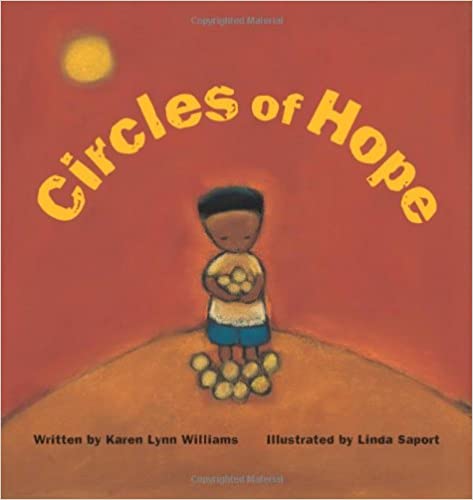
Circles of Hope by Karen Lynn Williams, illustrated by Linda Saport (2005)
When Facile’s new baby is born he comes up with a great idea for a gift for her while sitting in his own tree that his father planted for him when he was a baby. But planting a tree is not as easy as it seems. At the end of the story is more information about the tradition of planting a tree for each baby born in Haiti.

Eight Days: A Story of Haiti by Edwidge Danticat, illustrated by Alix Delinois (2010) **(both the author and illustrator were born in Haiti)**
After an earthquake, a seven year old boy is found 8 days later. He explains how he played in his imagination to help him get through those scary eight days when he was trapped under his house. At the end of the book is more information about the 2010 earthquake that hit Haiti.

Freedom Soup by Tami Charles, illustrated by Jacqueline Alcántara (2019)
Belle and her grandmother are making Freedom Soup while her grandmother tells the story behind the name Freedom Soup. She tells about how the people of Haiti rose up to fight back against slavery and win their freedom.
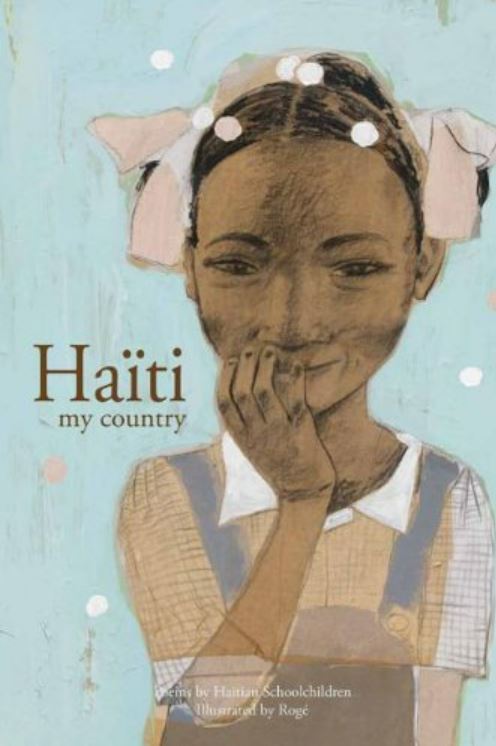
Haiti: My Country poems by Haitian School Children, illustrated by Rogé, translated by Solange Messier (2014) **(all poems were written by children from Haiti)**
Haitian children share their love for their country in poems with beautiful illustrations of the children who wrote each poem.

Hope for Haiti written and illustrated by Jesse Joshua Watson (2010)
After the devastating earthquake hit Haiti in 2010 so much is destroyed. A little boy helps his family rebuild a simple shelter on the grass of the soccer stadium. He joins a girl playing soccer with a makeshift ball and suddenly there are a bunch of kids playing soccer together. A man sees them playing and joins in for a little while, reminiscing about old games played at the stadium. The he heads off and brings the kids back a really special gift.

I Want to Ride the Tap Tap by Danielle Joseph, illustrated by Oliver Ganthier (2020) **(illustrator was born in Haiti)**
Claude keeps wanting to ride with people as they head off on the Tap Tap bus, but he has to go to school. On Sunday, however, his parents have a special surprise for him. At the end is more information about the Tap Tap buses.

Josias, Hold the Book by Riesmeyer Elvgren, illustrated by Nicole Tadgell (2006)
Josias worries about his garden and the plants that won’t grow. When he sees the other children going to school he says he has no time to learn to read when he needs to focus on making his garden grow. Josias tries giving the plants more water, and more fertilizer but has no luck getting the plants to grow. He decides to ask a student if the teacher might be able to find the answer in a book. Josias convinces his parents to let him go to school so he can learn how to be a better gardener through books. At the end of the book is more information about school in rural parts of Haiti.

Mama’s Nightingale: A Story of Immigration and Separation by Edwidge Danticat, illustrated by Lesli Staub (2015) **(illustrator was born in Haiti)**
A little girl, who’s mother is an undocumented citizen from Haiti is imprisoned. The girl misses her mother and loves listening to the cassette tapes her mother records for her with stories. The girl decides to write to the news to tell them about her mother in prison. At the end of the book is more information about the children of parents who have been jailed or deported do to not having the proper papers.
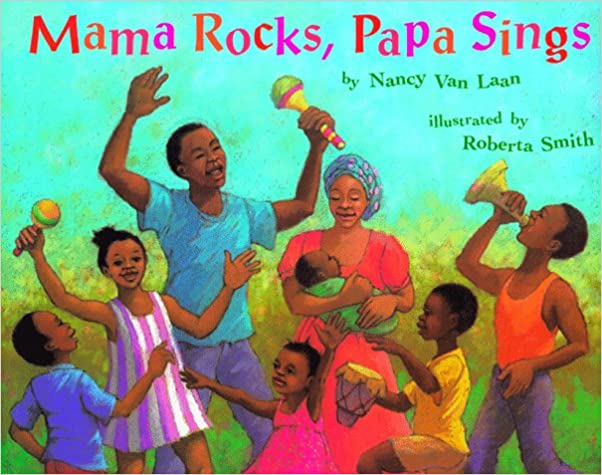
Mama Rocks, Papa Sings by Nancy Van Laan, illustrated by Roberta Smith (1995)
A mother and a father have a little baby and suddenly so many children in the village come needing parents to care for them and the household grows. At the beginning of the book is information about inspiration for this book and at the end of the book is more information about Haiti.

My Day with the Panye by Tami Charles, illustrated by Sara Palacios (2021)
Fallon is excited to join her Manman at the market and she really wants to be able to carry the Panye, the basket, on her head just like her mother. When Fallon tries, the basket falls off of her head. Her mother gives her advice for how to carry a basket so it won’t fall off. After shopping Fallon’s mother lets her try again and again until Fallon can carry the basket. At the end of the book is more information about the history of the panye basket carried on the heads of women in various parts of the world. The author based this story on her husband’s childhood stories from Haiti.
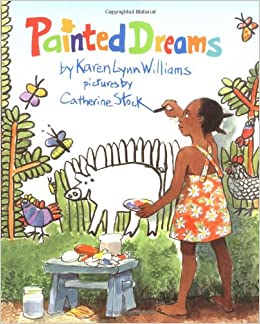
Painted Dreams by Karen Lynn Williams, illustrated by Catherine Stock (1998)
Ti Marie loves drawing and makes a picture on the side of her house which her mother wipes off. Later Ti Marie pasts the priest’s houses and sees all the paintings on the walls of the buildings. She finds his mostly empty paint tubes in his trash and by adding water makes more paint so she can be an artist too. At the marketplace no one buys her family’s produce but then Ti Marie has a great idea for the wall behind her mother’s market spot. At the end of the book is more information about the time the author spent in Haiti and the artists she saw there.

Please, Malese!: A Trickster Tale from Haiti by Amy MacDonald, illustrated by Emily Lisker (2002)
Malese notices that his shoes are worn out but has no money for new ones. He tricks two different shoe makers into making the same shoe for his different feet and pretends to not like the shoe, thereby getting both shoes for free. He continues to trick his neighbors into for a bottle of rum and help around the house. At the end of the story is more information about Malese, the trickster in Haitian folklore.

Running the Road to ABC by Denizé Lauture, illustrated by Reynolds Ruffins (1996)
Children wake before dawn so they can travel the long road to school in time for the start of the day.

Sélavi: A Haitian Story of Hope by Youme (2004)
A little boy is orphaned by war and wanders Haiti trying to find his place and is found by another child. The child asks the little boy his name, but he can’t remember. He winds up calling himself Sélavi, which means “That is Life.” The older child shows Sélavi the banyan tree he lives in with other orphaned and lone children. Police chase children out of the tree and Sélavi is on his own again. With help from members of a church places for lone children to live are built. At the end of the book is more information about the homeless children in Haiti and the home for children called Lafanmi Sélavi.

Tap-Tap by Karen Lynn Williams, illustrated by Catherine Stock (1994)
Sasifi is helping her mother bring their produce to the market. Sasifi wants to ride the tap-tap as she hopes it will get them their faster, but they don’t have enough money to ride. After selling food all day they have enough money to ride the tap-tap home. They wait on the bus until more riders show up and fill the bus with foods and animals and many other items. Every time Sasifi thinks the bus must be full, more people crowd on for a ride.

Toussaint L’Ouverture: The Fight for Haiti’s Freedom by Walter Dean Myers, paintings by Jacob Lawrence (1996)
The paintings about Toussaint L’Ouverture’s life inspired author Myers to write this picture book version of the life of Toussaint L’Ouverture.
Honduras

Good Garden by Kate Smith Milway
Jamaica

Angelina’s Island written and illustrated by Jeanette Winter (2007)
Angelina is from Jamaica, but now lives in New York. She wants to go back to her real home. She keeps trying to remember and imagine the places in Jamaica she misses. One day her mom notices a Carnival taking place in the city. When Angelina goes she realizes that New York can be her home too and that some of Jamaica is there with her. At the end of the book is more information about Carnival.
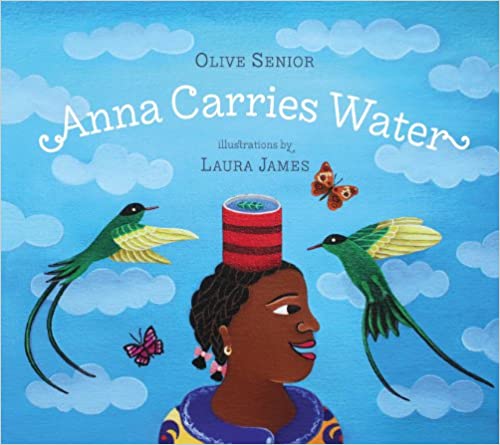
Anna Carries Water by Olive Senior, illustrated by Laura James **(Author was born in Jamaica)** (2013)
After school the children get water to carry home. Anna is the youngest and wishes she could carry water on her head as well as the older children. But when Anna tries the water always spills. One day she finally finds the motivation to carry the water on her head.

Birthday Suit by Olive Senior, illustrated by Eugenie Fernandes **(Author was born in Jamaica)** (2012)

Chalk Doll by Charlotte Pomerantz, illustrated by Frané Lessac (1989)
One day when Rose was sick her mother tells her about what it was like growing up in Jamaica. She tells about how she wanted a store bought chalk doll but winds up making her own rag doll instead. One day she gets a broken chalk doll and loves it anyway. The chalk doll story leads to other memories that Rose’s mother shares with her.
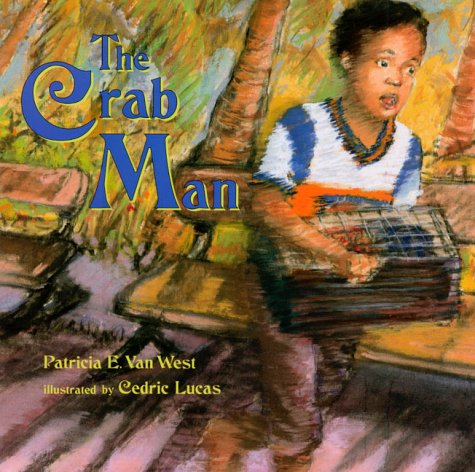
Crab Man by Patricia Van West, illustrated by Cedric Lucas (1998)
Neville catches crabs to sell to the crab man and one day gets to go with the man to see what he uses the crabs for. He has crab races for tourists in Jamaica to watch. When Neville realizes the man intends to race the crabs even after they are hot and tired, he runs away with the box of crabs to keep them safe. At the end of the book is more information about Jamaica and hermit crabs.
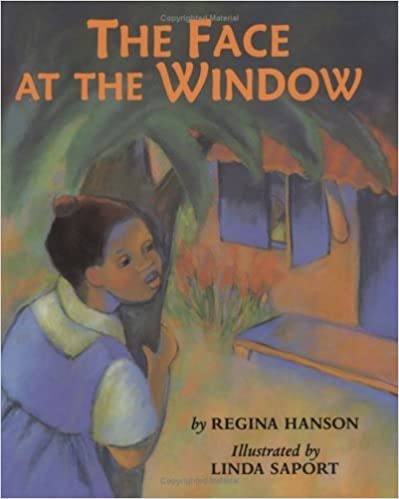
Face at the Window by Regina Hanson, Linda Saport (1997) **(author was from Jamaica)**
Dora tries to knock a mango off a tree belonging to Miss Nella. When Miss Nella looks out of her window the other kids say it is bad luck to see her face. When a big rain storm happens Dora thinks it is because she saw Miss Nella. When she tells her parents they explain that Miss Nella only has a mental illness and isn’t a bad person and introduce Dora to the woman.

Granny’s Kitchen: A Jamaican Story of Food and Family by Sadé Smith, illustrated by Ken Daley (2022)
Whenever Shelly-Ann is visiting her Granny and gets hungry, Granny shows her how to make her own food. Unfortunately with each new recipe comes a new food disaster. Shelly-Ann is sure she will never be able to cook, but one day when Granny is too tired to cook, Shelly-Ann realizes she needs to make food for when Granny wakes up. At the end of the book are the recipes that Granny teaches Shelly-Ann.

I am a Promise by Shelly Ann Fraser Pryce with Ashley Rousseau, illustrated by Rachel Moss (2020) **(Author Fraser Pryce was born in Jamaica)**
Shelly Ann has loved running since she was little. When she gets older she is invited to run in the Olympics representing Jamaica. At the end of the book is more information about Shelly Ann Fraser Pryce.

Likkle Miss Lou: How Jamaican Poet Louise Bennett Coverley Found Her Voice by Nadia Hohn, illustrated by Eugenie Fernandes (2019)
Louise loved writing poems but her teacher didn’t want her words to sound like the words the people of Jamaica around her were speaking. But Louise loved the poetic and musical sounds their words made. She wound up switching schools and was encouraged to write poems in the Jamaican Dialect. At the end of the book is more information about Louise Bennett Coverley as well as information about the author’s grandparents who immigrated to Canada from Jamaica.

Rocket Says Clean Up! by Nathan Bryon, illustrated by Dapo Adeola (2020)
Rocket is really excited to visit her grandparents in Jamaica. His grandparents have an animal sanctuary at their house and Rocket wants to help out. When Rocket finds a baby sea turtle tangled in plastic she decides it will take the whole community to help clean up the beach. Then they come up with a great plan to help prevent more trash from winding up on the beach in the future.
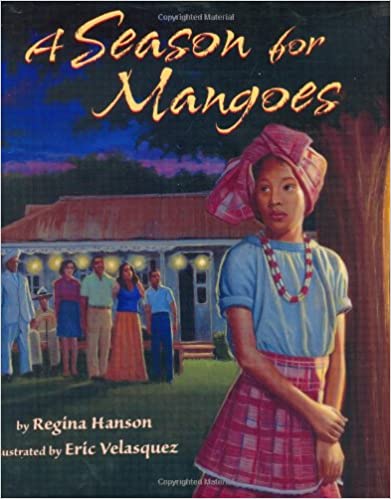
Season for Mangoes by Regina Hanson, illustrated by Eric Valasquez (2005) **(Author born in Jamaica)**
Sareen’s Nana has died and she is participating in her first sit-up which is a tradition in Jamaica when someone dies to celebrate their life. Everyone at the sit-up shares memoreis and stories about the Sareen’s Nana. Sareen wants to talk too but is afraid she will cry. She winds up telling stories about how much her Nana loved mangoes. At the end of the book is more information about sit-ups in Jamaica and mangoes.

Tangerine Tree by Regina Hanson, illustrated by Harvey Stevenson (1995) **(Author was born in Jamiaca)**
Ida’s father is leaving Jamiaca to go work in New York for an extended time for a new job. Ida is so sad she climbs up into her favorite tangerine tree to cry. Her father tells her there are no tangerines and Ida comes up with a special going away gift for him.

Tiger Soup: An Anansi Story from Jamaica retold and illustrated by Frances Temple (1994)
Tiger is making soup when Anansi the spider comes along following the good smell of the soup. Anansi tries to convince Tiger to leave the soup by going swimming. When Tiger jumps in the water Anansi quickly eats the soup and then looks around for someone to blame it on.

When the Beat was Born: DJ Kool Herc and the Creation of Hip Hop by Laban Carrick Hill, illustrated by Theodore Taylor III (2013)
Clive was born in Jamaica and loves music. He likes to peek in at the parties hosted by DJ King George and he wants to be a DJ when he grows up too. Eventually he moves to New York with his mom where when he is a teenager he hosts a dance party. He sets up two record players to repeat parts of songs that people like dancing to the best. People started break dancing to the music. At the end of the book is more information about Hip Hop music and time line.
Mexico




Abuelos by Mora

Adelita: A Mexican Cinderella written and illustrated by Tomie DePaola (2002)
Adelita’s mother died shortly after giving birth to Adelita. She has Esperanza as a nanny and eventually her father remarries a woman with two daughters. When Adelita’s father also dies, her new stepmother becomes especially mean to her. The stepmother eventually sends Esperanza away as well. When a special fiesta is announced for a wealthy ranch owner’s son everyone wants to go and impress him.
Armando and the Blue Tarp School by Fine
Between Us and Abuele: A Family Story from the Border by Perkins (2019)
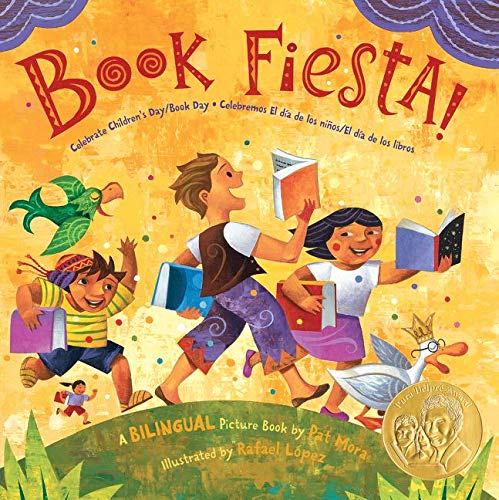
Book Fiesta: Celebrate Children’s Day/Book Day by Pat Mora, illustrated by Rafael López (2009) **(illustrator lives part time in Mexico)**
Children enjoy their favorite books, reading with different people and in different locations. At the end of the book is more information about The Day of the Child celebrated in Mexico as well as ideas on having your own Book Fiesta.
Borreguita and the Coyote: A Tale from Ayutla, Mexico by Aardema
Bravo, Tavo by Meunier
Butterflies on Carmen Street by Brown
Cazuela that the Farm Maiden Stirred by Vamos
Chato and the Party Animals by Soto
Chavela and the Magic Bubble by Brown
Cinco de Mouse-O! by Cox
Cuckoo: A Mexican Folktale by Ehlert
Dear Primo: A Letter to My Cousin by Tonatiuth

Danza!: Amalia Hernández and El Ballet Folklórico de México written and illustrated by Duncan Tonatiuh (2017) **(author is from Mexico)**
Amalia loves watching the dancers in the town square and wants to be a dancer herself someday. As she grows up she learns many different kinds of dances from ballet to modern and as many traditional and historical indigenous folk dances as she can. She formed her own Ballet Folklórico dance company which became famous in Mexico and then worldwide as well. At the end of the book is more information about Amalia and her dance company.
Diego Rivera: His World and Ours written and illustrated by Duncan Tonatiuh**(author is from Mexico)**

Domitila: A Cinderella Story from the Mexican Tradition adapted by Jewell Reinhart Coburn, illustrated by Connie McLennan (2000)
Domitila goes to work in the governor’s mansion when rains destroy her brick home and make her mother ill. At the mansion she begins making meals for the family. When her mother dies her spirit comes before Domitila and reminds her to always add a dash of love. The young man of the house goes looking for her when he misses her delicious cooking. Another woman forcers her way into Domitila’s family so she can pretend her daughter is Domitila in the hopes of the young man marrying her instead. At the end of the story is background information on this story and a recipe.
Dream Carver by Cohn
Elena’s Serenade by Greeslin
Erandi’s Braids by Madrigal
Frida by Winter
Frida Kahlo and her Animalitos by Brown
Fiesta by Guy
F is for Fiesta by Elya
From North to South by Lainez
Ghost Wings by Joosse
Gift for Abuelita by Luenn
Gold Coin by Ada
Gracias – Thanks by Mora
Grandma’s Chocolate by Price
Hill of Fire by Lewis
Horse Hooves ad Chicken Feet: Mexican Folktales by Philip
If You Were Me and Lived in Mexico by Roman
I See the Sun in Mexico by King
La Frontera: My Journey with Papa by Alfredo Alva & Deborah Mills, Illustrations by Claudia Navarro
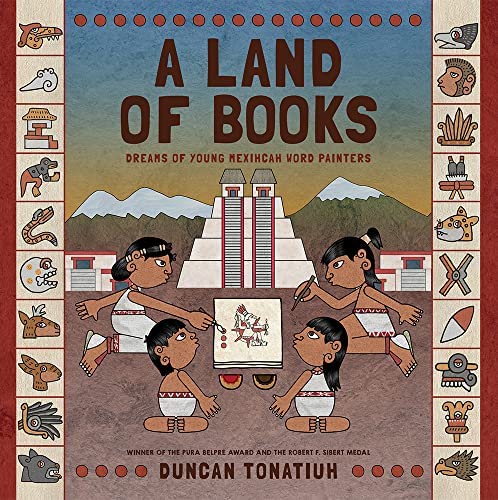
Land of Books: Dreams of Young Mexicah Word Painters written and illustrated by Duncan Tonatiuh (2022)
Mesoamerican Aztec siblings talk about the important work their parents do making books which document their ways of life. The sister talks about how they live in amoxtlalpan, which means the land of books. Their parents are called tlahcuilohqueh, which means painters of words and some day the siblings will also help make books. The sister describes how the books are made and how the colors for the paint are collected. At the end of the book is a glossary and more information about the thousands of books that were created at the height of the Mesoamerican empire. Sadly only 15 books survive today after many were destroyed by Spanish conquerors. There are also some photos of these books that still exist today.

Legend of the Poinsettia written and illustrated by Tomie DePaola (1993)
A legend of how the poinsettia came to be the Christmas plant. Lucinda and her mom are making the blanket for Baby Jesus at church for Christmas, but when her mom gets sick Lucinda tries to finish the blanket on her own with disastrous results. When she has no gift for Baby Jesus an old woman comes to Lucinda and tells her that he will love any gift. She grabs a handful of weeds and when she brings them into the church they transform. There is an author’s note at the end talking about the history of the poinsettia plant.
Little Red Ant and the Great Big Crumb: A Mexican Fable by Climo
Living in Mexico by Perkins
Look What Came from Mexico by Harvey
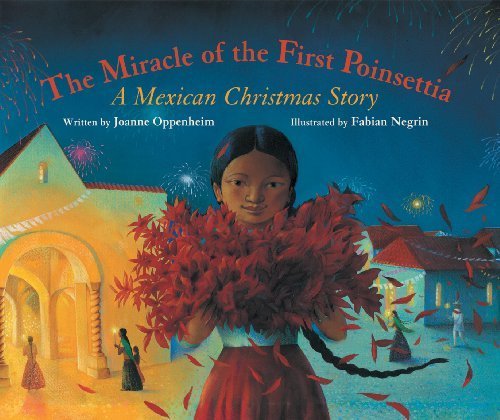
Miracle of the First Poinsettia by Joanne Oppenheim, illustrated by Fabian Negrin (2004)
Juanita is worried about Christmas, La Noche Buena, as her father recently lost his job. She wants to find a gift to bring to church that evening as a gift for Baby Jesus, but can’t afford anything. An angel statue tells Juanita to pick some green leaves and take them to the church. The green leaves turn into beautiful red leaves that were unlike any other plant people had seen. At the end is a song to sing and information about the author’s memories of Christmas in Mexico. Author spent many Christmases with her parents in Mexico and illustrator studied art in Mexico.
Miguel and the Grand Harmony by De la Peña
Musicians of the Sun by McDermott
My Papa Diego and Me: Memories of My Father and His Art by Marin

My Two Border Towns by David Bowles, illustrated by Erika Meza (2021)
A little boy travels from his border home in the US into Mexico where they spend the day, eating at a restaurant, visit relatives, and run some errands, and visit a friend who is a refugee on the border between the two countries.
Nana’s Big Surprise by Perez
New home by de Regli (2019)

Nine Days to Christmas: A Story of Mexico by Marie Hall Ets, illustrated by Aurora Labastida (1959)
Ceci is excited to get her first Christmas piñata and to be part of her first Posadas. When she and her mother go to the market to pick out the piñata, Ceci watches the piñatas dance and move before her. They are each excited to be picked by a child who is choosing her first ever piñata, as that will make the piñata even more special. Ceci does not want to hit her piñata to make the treats come out since it is so beautiful. But when the other children open it up, something special happens. The illustrator lived and worked in Mexico for a while.
Off We Go to Mexico by Krebs
Pancho’s Piñata by Rhodes
Pedro and the Padre by Aardema
Pedro’s Burro by Capucilli
P is for Piñata: A Mexican Alphabet by Johnston
Pot that Juan Built by Andrews-Goebel
Princess and the Warrior written and illustrated by Duncan Tonatiuh **(author is from Mexico)**
Remembering Day by Mora
Riddle of the Drum: A Tale from Tizapán, Mexico by Aardema
Runaway Piggy by Luna (Gingerbread Man story)
Runaway Radish by Levy (Gingerbread Man story)

Saturday Market by Patricia Grossman, illustrated by Enrique O. Sánchez (1994)
Early in the morning people start getting ready for the Saturday Market. People come from all over to sell foods, clothing, and other items.

Something About Grandma written and illustrated by Tania de Regil (2022) **(author is from Mexico)**
Julia goes to stay with her grand mother in Mexico City while her parents have a new baby. Julia misses her parents but her grandmother always knows what to do and how to have fun.
Spike the Mixed-Up Monster by Hood
Tortilla Factory by Paulsen
Two White Rabbits by Buitrago
Viva Frida by Morales
What Can You Do with a Rebozo by Tafola

Whiskers, Tails, and Wings: Animal Folktales from Mexico by Judy Goldman, illustrated by Fabricio VandenBroeck (2013) **(Both the author and illustrator live in Mexico)**
Five animal tales are retold here based on traditional stories from five different indigenous peoples from Mexico- the Tarahumara, the Seri, the Huichol, the Triqui, and the Tseltal. At the end of each story more information is shared about each indigenous group.
Woman Who Outshone the Sun by Martinez
Montserrat

My Little Island by Lessac
Nicaragua

Invisible Hunters by Chow
Mother Scorpion Country by Wilson
Trisba and Sula: A Miskitu Folktale from Nicaragua by MacCracken

Uncle Nacho’s Hat adapted by Harriet Rohmer, illustrated by Veg Reisberg (1989)
Uncle Nacho has a hat full of holes that he is always frustrated with. One day his niece brings him a brand new hat and Uncle Nacho doesn’t know what to do with his old one. He eventually puts it in on top of the trash hoping someone else might find it and take it. But every time he gets rid of his hat, someone recognizes it and brings it back to Uncle Nacho. At the end of the book is more information about the background of the story.
Panama

Christmas Surprise for Chabelita by Argentina Palacios, illustrated by Lori Lohstoeter (1993) **(author was born in Panama)**
When Chabelita’s mother goes to work in the big city, Chabelita learns her mother’s favorite poem to recite at the Christmas pageant in the hopes that her mother will come and hear it.

Is This Panama?: A Migration Story by Jan Thornhill, illustrated Soyeon Kim (2013)
Sammy is a warbler who lives in the arctic circle, and since it is getting cold Sammy knows it is time to start heading to Panama. He realizes all the other warblers have already left for Panama and he doesn’t know how to get there, so he asks other animals for help and slowly starts making his way south. At the end of the book is more information about the route Sammy took to Panama as well as the animals he meets along the way and migration.
Paraguay

Ada’s Violin: The Story of the Recycled Orchestra of Paraguay by Susan Hood, illustrated by Sally Wern Comport (2016)
Ada lives in a town that houses the landfill for the larger cities nearby. She would love to play the violin but they are very expensive. When a new music teacher arrives he helps to make instruments from items in the trash pile. and teaches the kids how to play. At the end of the book is more information about the real kids who play instruments made from recycled objects and how they have played performances around the world.
Puerto Rico (US Territory)
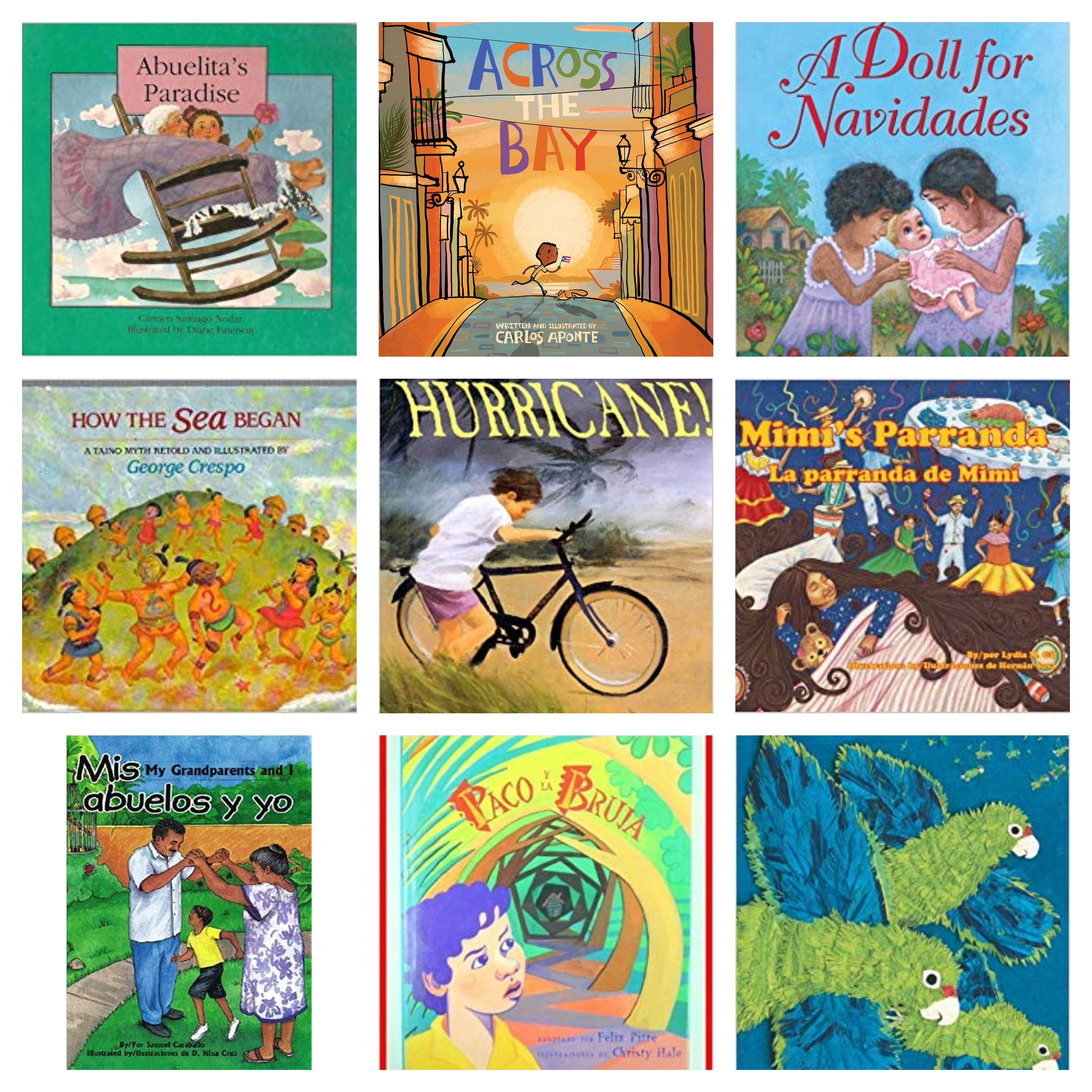
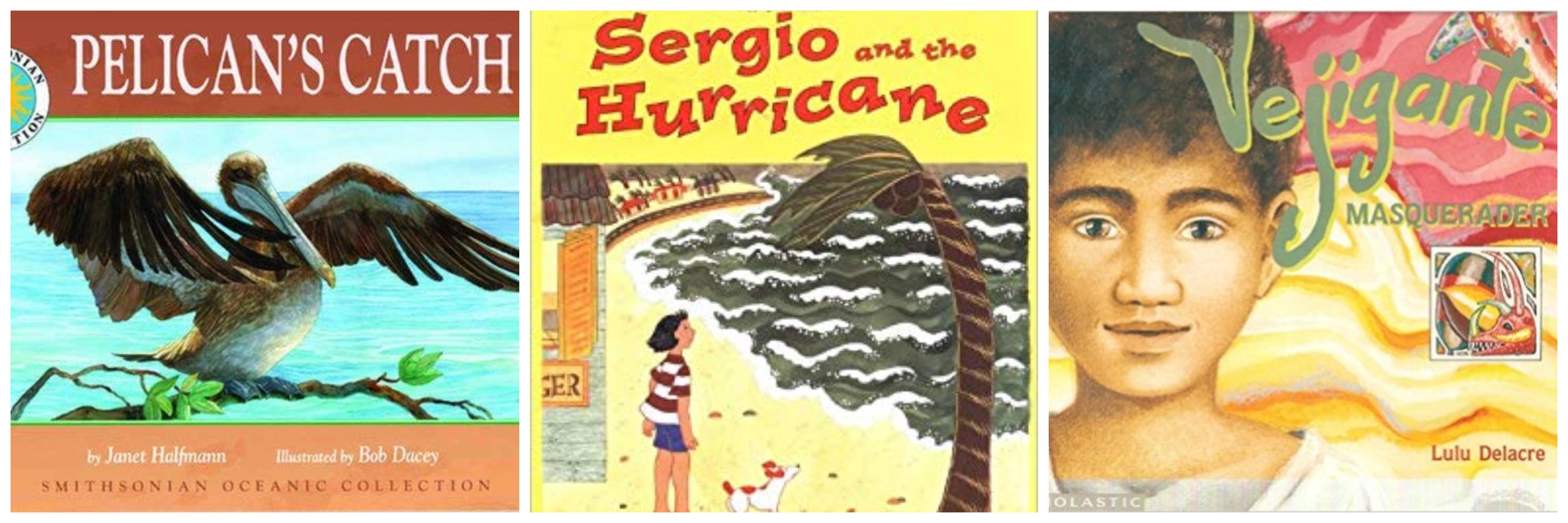
Abuelita’s Paradise by Nodar
Across the Bay by Carlos Aponte

Coquíes Still Sing: A Story of Home Hope, and Rebuilding by Karina Nicole González, illustrated by Krystal Quiles (2022)
Elena loves her grandmothers mango tree and listening to the Coquí frogs sing. After a hurricane, Elena and her family work to rebuild their neighborhood and replant their garden. At first there are no leaves on the mango tree and the frogs are silent. It takes time for people and nature to recover after such a bad storm. At the end of the book is more information about Puerto Rico, Hurricane Maria, and the Coquí frogs. Both the author and illustrator have spent a lot of time in Puerto Rico visiting family.

Doll for Navidades by Esmeralda Sántiago, illustrated by Enrique Sánchez (2005) **(Author spent childhood in Puerto Rico)**
The story is based on the author’s childhood when she really wanted a baby doll for Navidades. The little girl in the story enjoys all the traditions of the Christmas season Misa de Gallo at midnight on Christmas Eve, parrandas singing to people in their houses, and leaving grass and water by their shoes for the Three Wise Men’s camels on Three Kings’ Day. The little girls biggest hope is to receive a baby doll from the Wise Men.

Girl Named Rosita: The Story of Rita Moreno: Actor, Singer, Dancer, Trailblazer! by Anika Aldamuy Denise, illustrated by Leo Espinoza
Rosita Dolores Alverio was born in Puerto Rico where she lived until she was five years old when she and her mother left the rest of the family and moved to New York City. Rosa is interested in dancing and acting and takes lessons and finally starts getting minor roles in movies and changes her name ot Rita Moreno. Her big break out movie which she also won an Oscar for was as the character Anita in West Side Story.

The Golden Flower: A Taino Myth from Puerto Rico by Nina Jaffe, illustrated by Enrique O. Sánchez (1996)
This legend tells how Puerto Rico, once called Boriquén, was once only dry land with no water or plants. A young child finds several seeds and plants them at the top of the mountain which becomes beautiful and lush. A flower grows in the forest and becomes so big and loud that people are afraid to go near it. Then they all decide they want the plant, which was a pumpkin. When the pumpkin breaks, it fills the world with water and the mountain top becomes the island now known as Puerto Rico. At the end of the book is more information Boriquén.
How the Sea Began: A Taino Myth by Crespo
Hurricane! By London
Mimi’s Parranda by Gill
My Grandparents and I by Carabello (2004)
Our Roof is Blue by Echenique (2023)
Paco and the Witch by Pitre
Parrots Over Puerto Rico by Roth
Pelican’s Catch by Halfmann
Sergio and the Hurricane by Wallner

Shake it Morena!: And Other Folklore from Puerto Rico by Carmen T. Bernier-Grand, illustrated by LuluDelacre (2002) **Author and illustrator grew up in Puerto Rico**
A collection of short stories, games, rhymes, riddles, and a couple snacks remembered by the author from growing up in Puerto Rico. At the end of the book is the music for the songs.
Tito Puente, Mambo King by Monica Brown
Vejigante-Masquerader by Garza
Saint Lucia

My Grandpa and the Sea by Carolrhoda

To Carnival: A Celebration in St. Lucia by Baptiste Paul, illustrated by Jana Glatt (2021) **(Author grew up on Saint Lucia)**
Melba is really excited to go to Carnival but as she tries to make the buses and get other rides to carnival she keeps meeting new people who join her as she makes her way to carnival. Melba is sad when they all finally arrive just to see that the parade just ended. But then she and her friends realize something really special. At the end of the book is more information about Saint Lucia, carnival, and the Creole language.
St. Kitts and Nevis
Suggestions?
Trinidad and Tobago


An Island Christmas by Lynn Joseph, illustrated by Catherine Stock **(Author born in Trinidad)** (1992)
Rosie helps her family get ready for Christmas. She helps to pick petals for the sorrel drink, enjoys listening to the parang band, and helps her brother put up and decorate their tree, which is the branch from a guava tree.
Coconut Kind of Day by Joseph
Divali Rose by Rahaman
Fish for the Grand Lady by Bootman
Gregory Cool by Binch
Jasmine’s Parlour Day by Joseph
Jump Up Time by Joseph
Little Salmon for Witness by Rahaman
United States
Alabama

Stitchin’ and Pullin’: A Gee’s Bend Quilt by Patricia McKissack
Alaska
Alaska’s Snow White and Her Seven Sled Dogs by Dwyer (2015)
Charlie and the Blanket Toss by Brown (2015)

Chia and the Fox Man: An Alaskan Dena’ina Fable retold by Barbaraand Ethan Atwater, illustrated by Mindy Dwyer (2020) **(both authors are Dena’ina)**
Chia is an orphan who was taken in by another man in his Dena’ina village. Chia has many chores to do and these are made much more difficult because of the cold weather. One night Chia hears a noise and discovers the Fox Man who is chipping ice and making the snow and cold. Chia steals his pick ax in the hopes of making the weather change but comes to learn that stealing wasn’t the answer. At the end of the book is more information about the Dena’ina and their stories.
Cozy by Jan Brett
How Raven Got His Crooked Nose: An Alaskan Dena’ina Fable by Atwater (2020)
Salmon Princess: An Alaskan Cinderella Story by Dwyer (2004)

Under Alaska’s Midnight Sun by Deb Vanasse
Arizona

Big Moon Tortilla by Joy Cowley
Arkansas

Fiddlin’ Sam by Marianna Dengler
California

Our California by Pam Muñoz Ryan, illustrated by Rafael López (2008) **(author lives in California)**
Learn about the many different cities in California in this rhyming text. At the end of the book is more information about California as well as the cities
Colorado

Dreamplace by George Ella Lyon
Connecticut

N Is for Nutmeg: A Connecticut Alphabet by Grodin
Delaware

F Is for First State: A Delaware Alphabet by Crane
Florida

Sam the Sea Cow by Francine Jacobs, illustrated by Laura Kelly (1979)
When Sam is a baby he gets a bad cut on his head from a boat propeller, later when he is two years old and living on his own he gets stuck halfway in a drain pipe and can’t get out. Since he is already so large, people can’t help pull him out. Eventually he is rescued and taken to the aquarium to recover. Once he is healthy again he is released back into the wild. At the end of the book is more information about manatees or sea cows.
Georgia

A Net to Catch Time by Sara H. Banks
Hawaii

Kapaemahu by Hinaleimoana Wong-Kalu, Dean Hunter, and Joe Wilson, illustrated by Daniel Sousa (2022) ** Author is from Hawaii**
Written in English and Olelo Niihau is a story about four healers, whose spirits were both male and female who arrived on the island Waikiki from Tahiti to share their healing powers with the people on the island. When it was time for the four healers to leave, the people on the island gathered 4 boulders to represent the healers. The boulders were lost over time but eventually uncovered.

‘Ohana Means Family by Ilima Loomis, illustrated by Kenard Park (2020) ** Author is from Hawaii**
This story tells all about a family getting ready for the luau in the style of story like “This is the House that Jack Built.” At the end of the book is a glossary, as well as information about the history and importance of some of the foods mentioned in the book.

Punia and the King of Sharks by Lee Wardlaw, illustrated by Felipe Davalos (1997)
A group of sharks guards all the lobsters. When Punia’s father tried to catch lobsters, he was eaten by sharks. Punia tricks the sharks into looking elsewhere in the water for him and he is then able to catch two lobsters. Each time Punia tricks the sharks he says one of the other sharks told him what to do and the king of the sharks banishes that shark. Soon the king of the sharks is alone and Punia has to trick him one last time.
Idaho

Fire Storm by Jean Craighead George
Illinois

Murphy’s Ticket: The Goofy Start and Glorious End of the Chicago Cubs Billy Goat Curse by Herzog
Indiana

H is for Hoosier: An Indiana Alphabet by Bruce Langton
Iowa

Tomás and the Library Lady by Rail Colón, illustrated by Pat Mora (1997)
Tomás knows his grandfather’s stories so well that his grandfather suggests Tomás go to the public library to learn some new stories. She shares books with him which he then shares at home with his family. Soon it is time for Tomás’ family to go back to Texas and he is sad to leave the library lady. At the end of the book is more information about Tomás Rivera who this book is about.
Kansas

Aunt Minnie and the Twister by Mary Skillings Prigger
Kentucky

B is for Bluegrass: A Kentucky Alphabet by Reihle
Louisiana

Gaston goes to Mardi Gras written and illustrated by James Rice
Maine

Miss Rumphius written and illustrated by Barbara Cooney (1985)
A little girl tells about her great aunt Alice Rumphius. When Alice is little she promises to make the world a more beautiful place. Wehn she grows up she plants lupine seeds all around Maine. Based on the true story of Miss Rumphius.
Maryland

B Is for Blue Crab: A Maryland Alphabet by Menendez
Massachusetts

Bus Route to Boston by Maryann Cocca-Leffler
Michigan

January’s Sparrow by Patricia Polacco
Minnesota

V is for Viking: A Minnesota Alphabet by Wargin
Mississippi

Mississippi by Siebert
Missouri

S is for Show Me: A Missouri Alphabet by Young
Montana

Dust Devil by Anne Isaacs, illustrated by Paul Zelinsky
Nebraska

C is for Cornhusker: A Nebraska Alphabet by Shepherd
Nevada

Rhyolite: The True Story of a Ghost Town written by Diane Siebert, illustrated by David Frampton
New Hampshire
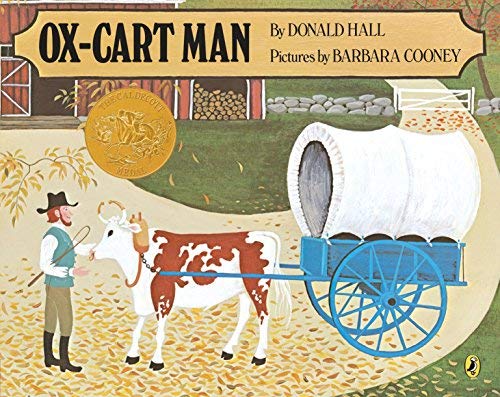
Ox-Cart Man by Donald Hall, Illustrated by Barbara Cooney
New Jersey

G is for Garden State: A New Jersey Alphabet by Cameron
New Mexico

Carlos and the Squash Plant by Jan Romero Stevens

Southwest Sunrise by Nikki Grimes, illustrated by Wendell Minor (2020)
Jayden is moving to New Mexico from New York and doesn’t think this new place could ever feel like home. He thinks New Mexico is just a desert with no colors. His first morning there, Jayden goes for a walk and sees new animals, beautiful colors and realizes that New Mexico has skyscrapers of its own in the land forms that reach towards the endless blue sky.
New York

Book Boat’s In by Cynthia Cotton, illustrated by Frané Lessac (2013)
Jesse and his father are heading into town on their wagon, when Jesse notices the book boat is docked along the Erie Canal. He wants to buy a copy of Swiss Family Robinson but doesn’t have enough money. He does small jobs around town until the book boat comes back, so he will have enough for the book.

Tar Beach written and illustrated by Faith Ringgold (1991)
Cassie is enjoying the cool night air from her building’s rooftop with her family around her. She flies over the George Washington Bridge and the Union building which her father helped to build.
North Carolina

Sit-In: How Four Friends Stood Up by Sitting Down written by Andrea Davis Pinkney, illustrated by Brian Pinkney
North Dakota

A Boy Called Slow by Joseph Bruchac
Ohio

Lentil by Robert McCloskey
Oklahoma

S Is For Sooner: An Oklahoma Alphabet by Devin Scillian and illustrated by Kandy Radzinski
Oregon

Apples to Oregon: Being the (Slightly) True Narrative of How a Brave Pioneer Father Brought Apples, Peaches, Pears, Plums, Grapes, and Cherries (and Children) Across the Plains written by Deborah Hopkinson, llustrated by Nancy Carpenter
Pennsylvania

Saving the Liberty Bell by Megan McDonald
Rhode Island

R is for Rhode Island Red: A Rhode Island Alphabet by Allio
South Carolina

Carolina Shout! by Alan Schroeder and illustrated by Bernie Fuchs
South Dakota

M is for Mount Rushmore: A South Dakota Alphabet by Anderson
Tennessee

Quickest Kid in Clarksville by Miller
Texas

Armadillo Rodeo by Jan Brett
Utah

A is for Arches: A Utah Alphabet by Hall
Vermont

Snowflake Bentley by Jacqueline Briggs Martin
Virginia

O Is for Old Dominion: A Virginia Alphabet by Edwards
Washington

Larry Gets Lost in Seattle by John Skewes and Robert Schwartz
Washington DC

The Wall by Eve Bunting
West Virginia

John Denver’s Take Me Home, Country Roads adapted by Christopher Canyon
Wisconsin

The Raft by Jim LaMarche
Wyoming

When Esther Morris Headed West: Women, Wyoming, and the Right to Vote written by Connie Nordhielm Wooldridge, illustrated by Jacqueline Rogers
Virgin Islands (US Territory)

Rata-pata-scata-fata: A Caribbean Story by Gershator
Native American (throughout North America)
Abenaki

Hunter’s Promise by Bruchac
Racoon’s Last Race by Bruchac
Acoma

Good Rainbow Road by Ortiz
Algonquin


Little Firefly: An Algonquian Legend by Terri Cohlene, illustrated by Charles Reasoner (1990) Cinderella Story
Little Firefly is called “Little Burnt One” by her sisters after they forced her to do all the work by the hot fire. Her sisters want to marry the invisible hunter but can’t see what his bow is made of, which they would need to do in order to marry him. Little Firefly decides to go to the invisible hunter and his sister to see if they would like help. At the end of the book is more information about the Algonquin people.
Rough-Faced Girl by Martin (Cinderella story)
Terrible Cheeno by Parnell
Alutiq and Unangan (formerly called the Aleut)

Raven Makes the Aleutians written and illustrated by Janie Gibbons (2018)
Raven gets tired as he flies over the water after the great flood. When he rests on some kelp he meets an otter and asks him to fetch some pebbles from under the water. Now when Raven flies he drops a pebble each time he needs to rest as the pebbles form islands when they hit the water. In this way he formed the Aleutian Islands.
Anishinabe

Nibi’s Water Song by Sunshine Tenasco, illustrated by Chief Lady Bird (2019) * Author is from Anishinabe**
When Nibi tries to get a drink of water from her tap the water just comes out brown. Her neighbor’s house is the same way. Nibi tries finding water from the fancy houses but they will only help for so long. Eventually everyone realizes how important water is and go to the city to argue their case. At the end of the book the author shares her project called Her Braids to help make water clear and clean for First Nations People.
Cherokee

Apple Tree by Tharp-Thee

At the Mountain’s Base by Traci Sorell illustrated by Weshoyot Alivtre **author and illustrator are members of the Cherokee Nation**
At the foot of a mountain a grandmother weaves while surrounded by family, all of whom are worrying about the pilot in their family who is off at war. At the end of the story is more information about the history of Native American women who have served their country during war times.
First Strawberries by Bruchac

Magnolia Flower by Zora Neal Hurston and Ibram X. Kendi, illustrated by Loveis Wise (2022)
A brook is curious about stories of people in love, as told to it by the river. The river tells of a man, named Bentley, who escaped slavery and built his own settlement deep in a Florida forest where other runaways, called Maroons, could live safely. He married a Cherokee woman, named Swift Deer and the two had a daughter named Magnolia Flower. As Magnolia Flower grows up slavery comes to an end and she falls in love.
Owl Who Became the Moon by London
We Are Grateful by Sorrell (2018)
Cheyenne

Death of the Iron Horse by Goble
Quillworker: A Cheyenne Legend by Cohlene
Chicksaw

Baby Rattlesnake by Moroney
Chinook
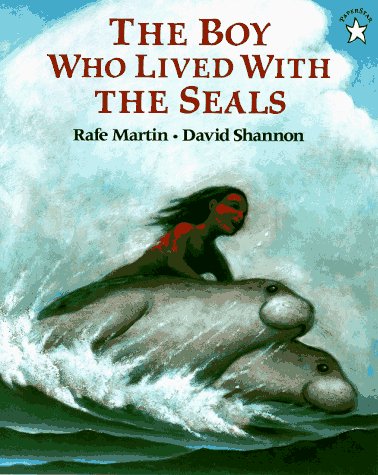
Boy Who Lived with Seals by Martin
Chippewa
Grandmother’s Dreamcatcher by McCain (1997)
Choctaw

Cloud Artist–A Choctaw Tale by Sherri Maret and illustrated by Merisha Sequoia Clark
Crossing Bok Chitto: A Choctaw Tale of Friendship and Freedom by Tingle
Saltypie: A Chocta Journey from Darkness into Light by Tingle
When Turtle Grew Feathers by Tingle
Comanche

Legend of the Bluebonnet by DePaola
Cree

As Long as the Rivers Flow by Loyie
Birdsong by Flett (2019)
Mwakwa Talks to the Loon by Auger

Stolen Words by Melanie Florence, illustrated by Gabrielle Grimard (2017) **(author is of Cree and Scottish heritage)**
A little girl asks her grandfather how to say “grandfather” in Cree. He is sad to tell her that he no longer remembers the language from his youth. He had been taken from his family and forced to forget his language. His grand daughter brings him a special book to help him find his Cree words again.
We All Count: A Book of Cree Numbers by Flett
We All Play by Julie Flett
Wild Berries by Flett
Creek/Muscogee

Good Luck Cat by Harjo
Great Ball Game: A Muskogee Story by Bruchac
Jingle Dancer by Smith
Delaware/Lenape

When the Shadbush Blooms by Messinger
Eastern Tribes
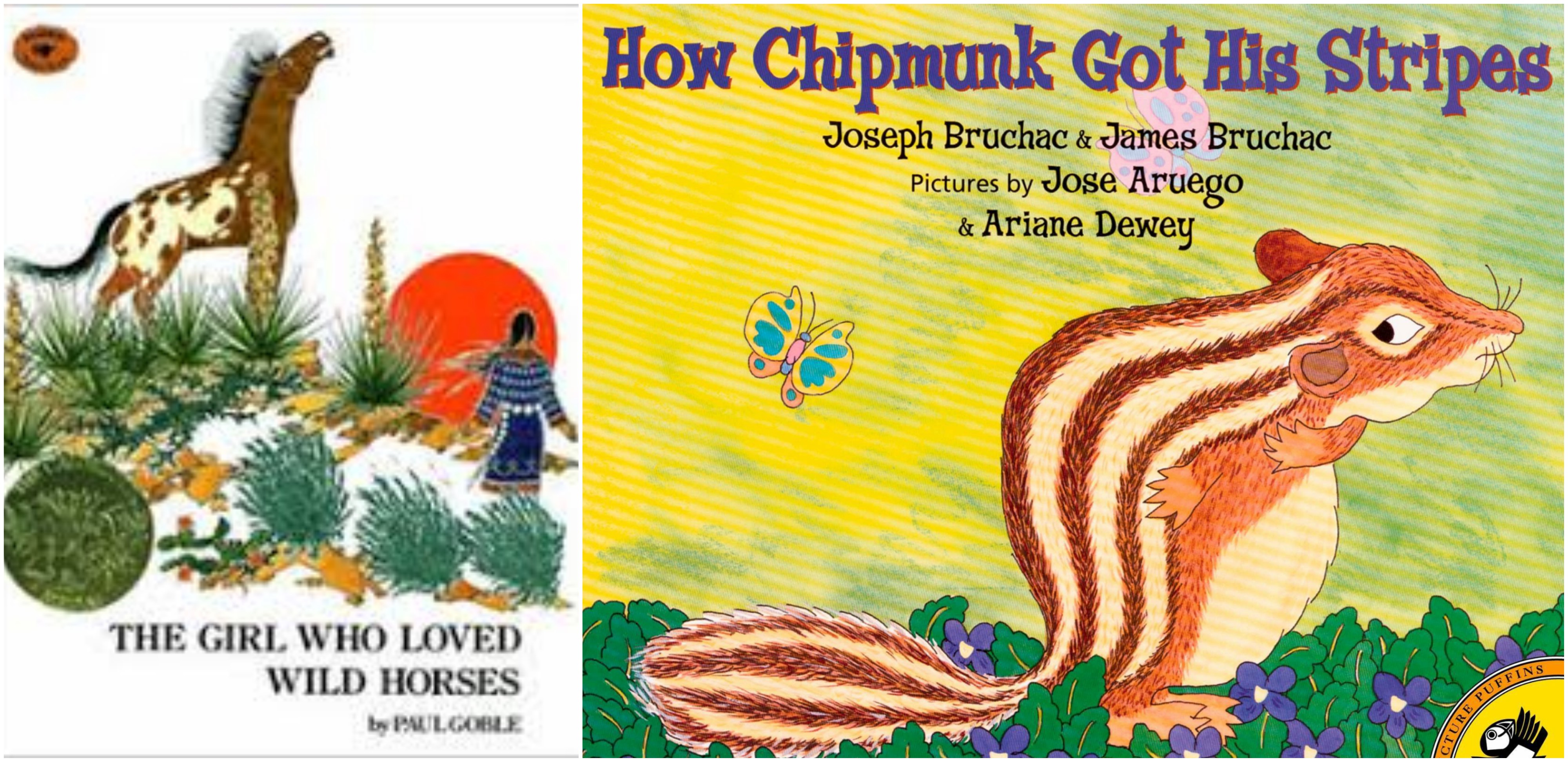
Girl Who Loved Wild Horses by Goble
How the Chipmunk Got His Stripes by Bruchac
Haida
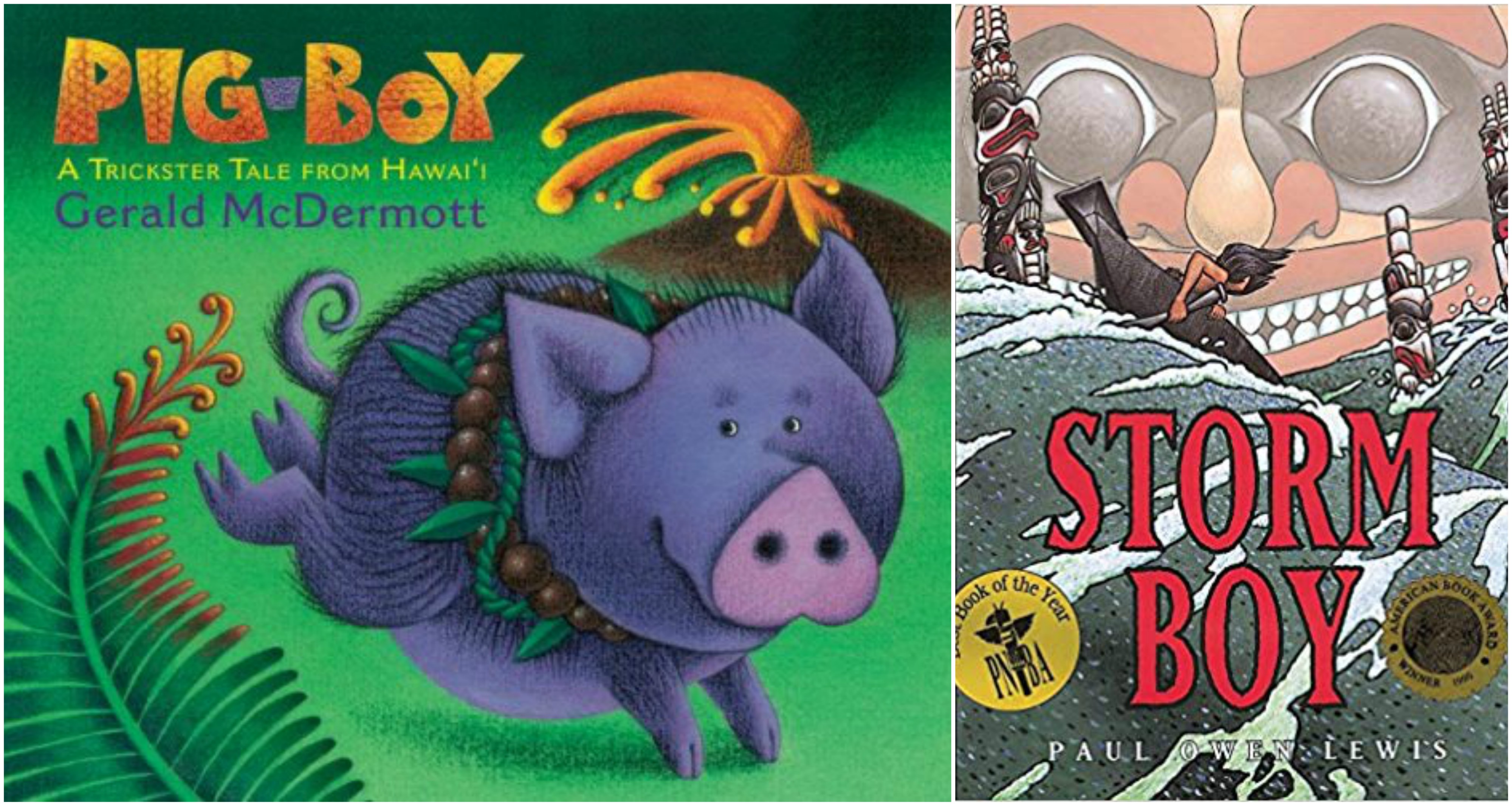
Pig-Boy: A Trickster Tale from Hawaii by McDermott
Storm Boy by Lewis
Hidatsa

Buffalo Bird Girl: A Hidatsa Story by Nelson
Ho-Chunk Nation

Finding My Dance by Ria Thundercloud, illustrated by Kalila Fuller (2022) **(author is a member of the Ho-Chunk Nation)**
Huron
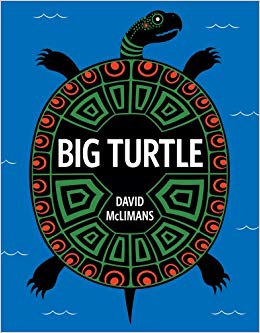
Big Turtle by McLimans
Inuit (Alaska)

Fox Wife by Beatrice Deer, illustrated by D.J. Herron (2018) **(author is Inuit)**
One night a fox falls to earth from the sky and sees people for the first time. The fox watches the people set up their tent. The fox watches the family for years, watching their young son grown up to be a man. He is surprised when things are done for him even though he is out on his own. He watches his tent from afar and sees the fox enter and when he enters the tent finds only a strange woman. He complains about a musky scent and offended the woman eventually leaves.

How Nivi Got Her Names by Laura Deal, illustrated by Charlene Chua (2016) **(author and illustrator are from Canada)**
At the beginning of the book is a forward written by the real Nivi’s biological mother explaining the Inuit custom of naming. The story is written by Nivi’s adopted mom and shares how she explains to Nivi about her namesakes. She has names that are special to both her adopted moms and her biological mom.

Immi’s Gift by Littlewood
Kamik: An Inuit Puppy Story by Uluadluak
Kamik’s First Sled by Sulurayok adapted from stories by Uluadluak
Naya: The Inuit Cinderella by Marceau-Chenkie
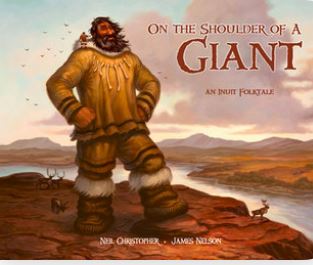
On the Shoulder of a Giant: An Inuit Folktale by Neil Christopher, illustrated by Jim Nelson (2015)
Long ago there was a giant named Inukpak. One day Inukpak meets a hunter, who is regular human sized and terrified of Inukpak the giant. Inukpak puts the hunter on his shoulder and begins to walk. He cares for the hunter as if he were his son, even though the hunter is a grown man. At the end of the book is more information about giants in folklore from the arctic.

Origin of Day and Night by Paula Ikuutaq Rumbolt, illustrated by Lenny Lishchenko (2018) **(Author is Inuit)**
In the beginning of time there was only darkness and Tiri the arctic fox liked this since he could hunt in the dark. However, Ukaliq the hare couldn’t see at night. She calls out “Ubluq”- day- to bring the sun up. Now the fox can’t see to find food. He calls out “Taaq”-darkness- so that it is night again. They keep fighting over day and night until they can come to an agreement to take turns.
Polar Bear Son: An Inuit Tale by Dabcovich
Iroquois
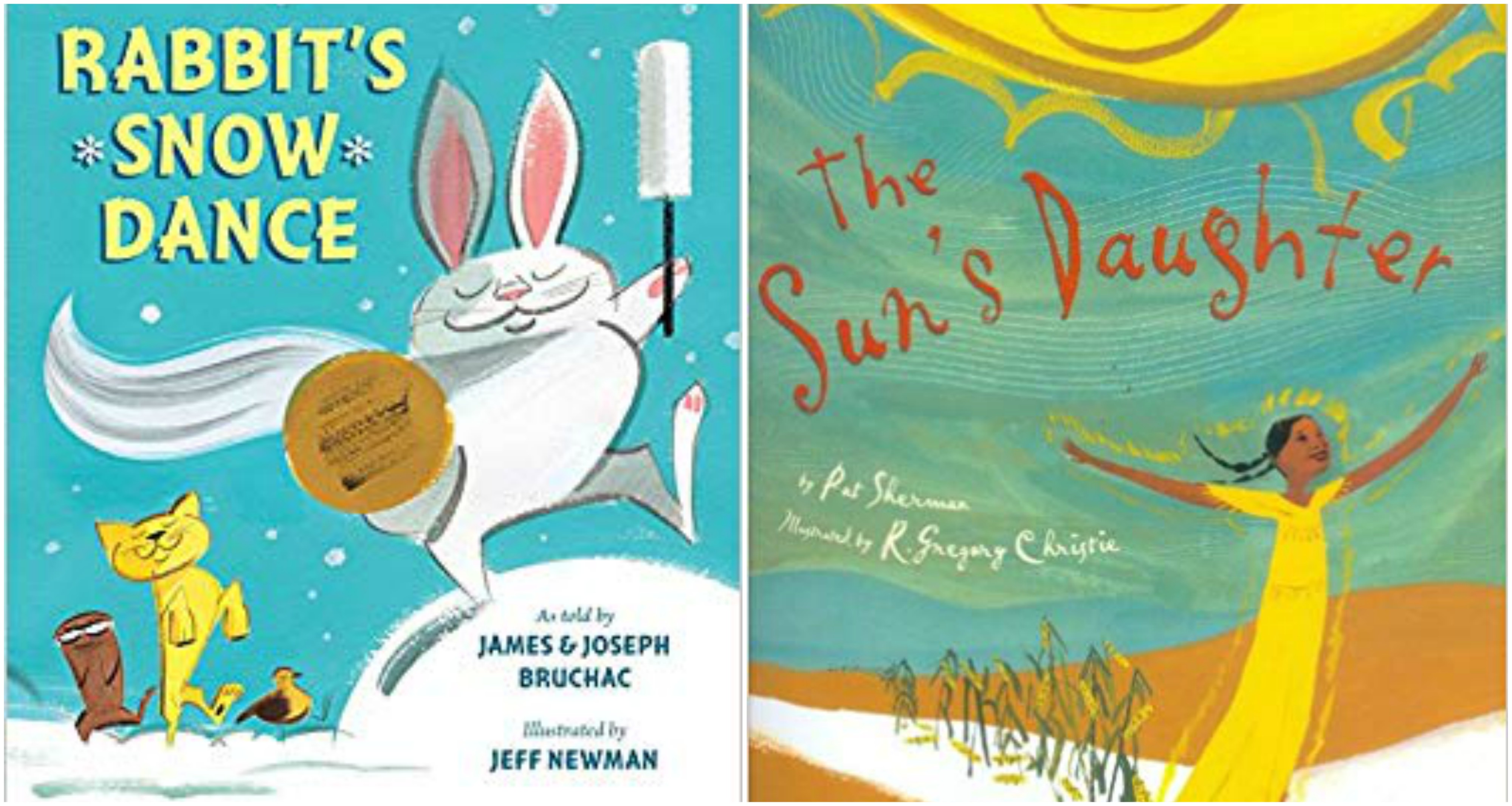
Rabbit’s Snow Dance by Bruchac
Suns Daughter by Sherman
Lakota
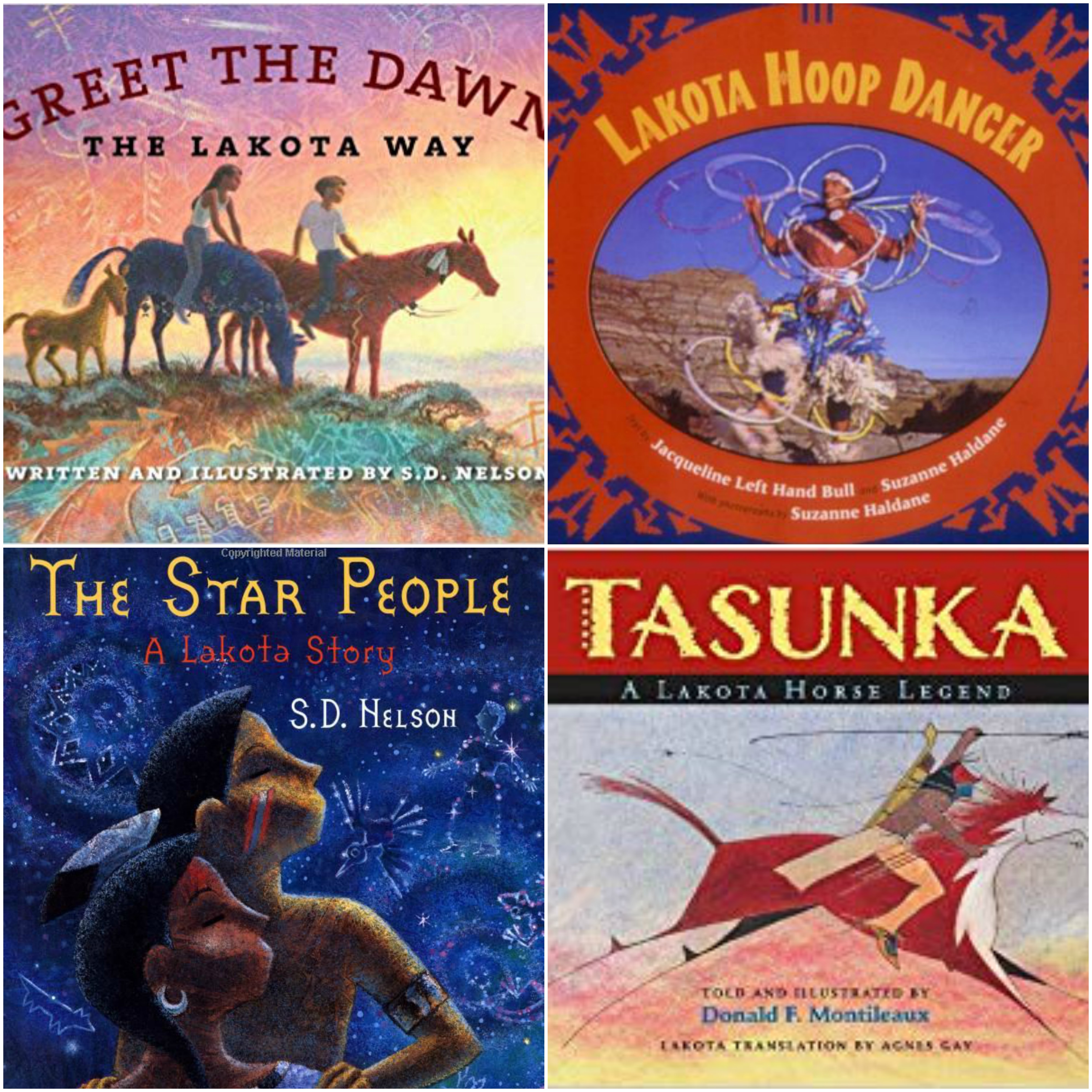
Greet the Dawn: The Lakota Way by Nelson
Lakota Hoop Dancer by Jacqueline Left Hand Bull
Star People: A Lakota Story by Nelson
Tasunka: A Lakota Horse Legend by Montileaux
Makah

Clamshell Boy: A Makah Legend by Cohlene
Mashpee Wampanoag

Keepunumuk: Weeâchumun’s Thanksgiving Story by Danielle Greendeer, Anthony Perry, and Alexis Bunten, illustrated by Garry Meeches Sr. (2022) **(Author is a member of the Mashpee Wampanoag Nation)**
Mayan

Rain Player by Wisniewski
Mohawk

Giving Thanks: A Native American Good Morning Message by Swamp
Hiawatha and the Peacemaker by Robertson
Navajo (the Diné People)

Eagle Boy by Hausman
How the Stars Fell into the Sky by Oughton

Water Lady: How Darlene Arviso Helps a Thirsty Navajo Nation by Alice B. McGinty, illustrated by Shonto Begay (2021) **(Illustrator is a member of the Navajo Nation)**
On one part of the reservation, a child named Cody is thirsty, but his family has used up all the water they have in their barrels. Elsewhere on the reservation Darlene Arviso has running water in her trailer, she realizes how lucky she is to have this. Darlene drives kids to school in a school bus and then brings a large tanker full of water to houses all over the reservation. At the end of the book is more information about Darlene Arviso as well as the Navajo Nation.
Ojibwe

Ancient Thunder by Yerxa

Bowwow Powwow by Brenda J. Child, translated by Gordon Joradain, illustrated by Jonathan Thunder (2018) **Author Brenda Child and illustrator are Red Lake Ojibwe**
Windy Girl and her dog Itchy Bow love hearing stories from her uncle and visiting the powwow. One night, while she sleeps, her dreams combine her love for her dog with the stories from her uncle and the sights at the powwow. At the end of the book is more information about the history of the Ojibwe people.
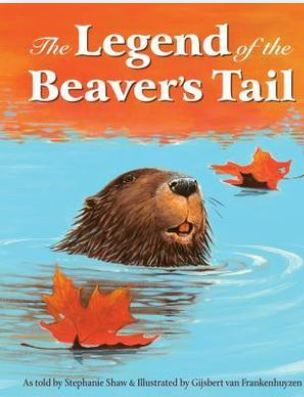
Legend of the Beaver’s Tail as told to Stephanie Show, illustrated by Gijsbert van Frankenhuyzen (2015)
Long ago, Beaver had a beautiful lush tail, similar to a squirrels. Beaver was very proud and boastful of his tail and brags about it to all the other animals. One winter as he chews on a tree trunk and admires his tail he fails to notice the tree about to topple over on him. The tree smashes his tail flat. He’s alienated all the other animals and none come to comfort him. Beaver decides to do something to help all the animals and builds the first dam. At the end of the book is more information about beavers and the Ojibwe people.
Legend of Mackinac Island by Wargin
Nibi Emosaawdang / The Water Walker by Robertson (2019)
Sky Sisters by Waboose

Sootface: An Ojibwa Cinderella Story retold by Robert San Souci, illustrated by Daniel San Souci (1994)
After an Ojibwa man’s wife dies he wants his three daughters to share the chores. The two older sisters are lazy and make the youngest do all the work. They also call her Sootface after smearing ashes on her face. Nearby an invisible hunter lives with his sister. He decides to marry any woman who can see him. The two older sisters try with no luck. Then Sootface makes herself a dress of birch bark and goes to see the hunter.
Pacific Northwest Coast Tribes

First Mosquito by Simpson
Frog Girl by Lewis
Raven: A Trickster Tale from the Pacific Northwest by McDermott
Whale in the Sky by Siberell
Passamaquoddy

The Frist Blade of Sweetgrass: A Native American Story by Suzanne Greenlaw and Gabriel Frey, illustrated by Nancy Baker (2021) **(Greenlaw is a citizen of the Maliseet and Frey is a citizen of the Passamquoddy)**
Uhkomi’s grandmother shows her the best place to find sweetgrass, which she in turn learned from her grandmother. At first Uhkomi is frustrated and has trouble identifying the sweetgrass and her grandmother encourages her to slow down and really look at the grass and to feel her ancestors from the past around her. At the end of the book is more information about the Passamaquoddy and Maliseet nations as well as sweetgrass.

Thanks to the Animals by Sockbasin
Penobscot

Kunu’s Basket: A Story from Indian Island by Francis
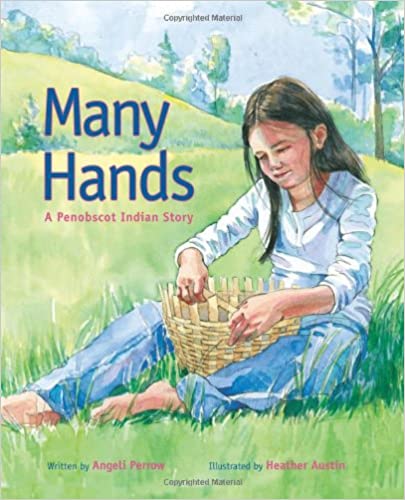
Mary’s Hands: A Penobscot Indian Story by Perrow
Pawnee

Mud Pony by Cohen
Plains Indians Tribes

Buffalo Woman by Goble
Dream Wolf by Goble
Gift of the Sacred Dog by Goble
Girl Who Loved Wild Horses by Goble
Legend of the Indian Paintbrush by DePaola
Look for many other Plains Indians books by Goble
Pueblo

Arrow to the Sun: A Pueblo Indian Tale by McDermott
Coyote: A Trickster Tale from the American Southwest (also Zuni) by McDermott
Salish

Beaver Steals Fire: A Salish Coyote Story by Confederated Salish and Kootenai Tribes

Stand Like a Cedar by Nicola I. Campbell, illustrated by Carrielynn Victor (2021) **(author and illustrator are Salish)**
Join children as they experience and appreciate the natural world around them. Many names of animals as well as a few short phrases that ask the reader to explore their five senses are written in the Nłeʔkepmx or Halq’emeylem languages (formerly known as the Salish).
Seminole
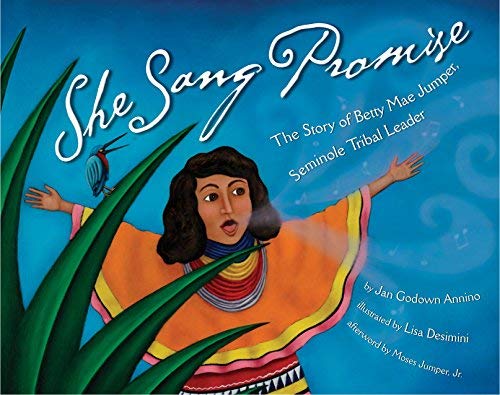
She Sang Promise: The Story of Betty Mae Jumper, Seminole Tribe Leader by Annino
Seneca

Turtle’s Race with Beaver by Bruchac
Shoshoni

Crossing by Napoli (story of Sacagawea)
Picture Book of Sacagawea by Adler
Shoshoni Pony by Macgregor
Sioux

Moonstick: The Seasons of the Sioux by Bunting
Southwestern Tribes
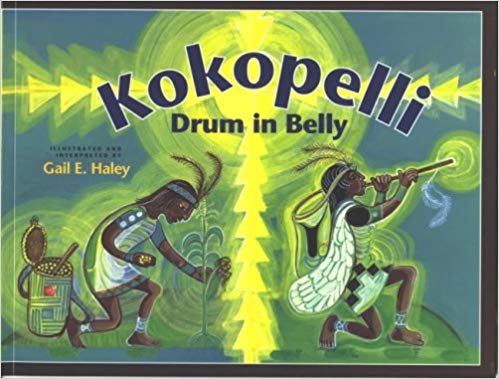
Kokopelli: Drum in Belly by Haley
Suquamish
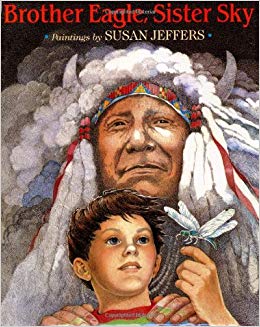
Brother Eagle, Sister Sky by Seattle
Tlingit

Totem Tale by Vanasse
Ute

Coyote Steals the Blanket by Stevens
Wabanaki
Wasco
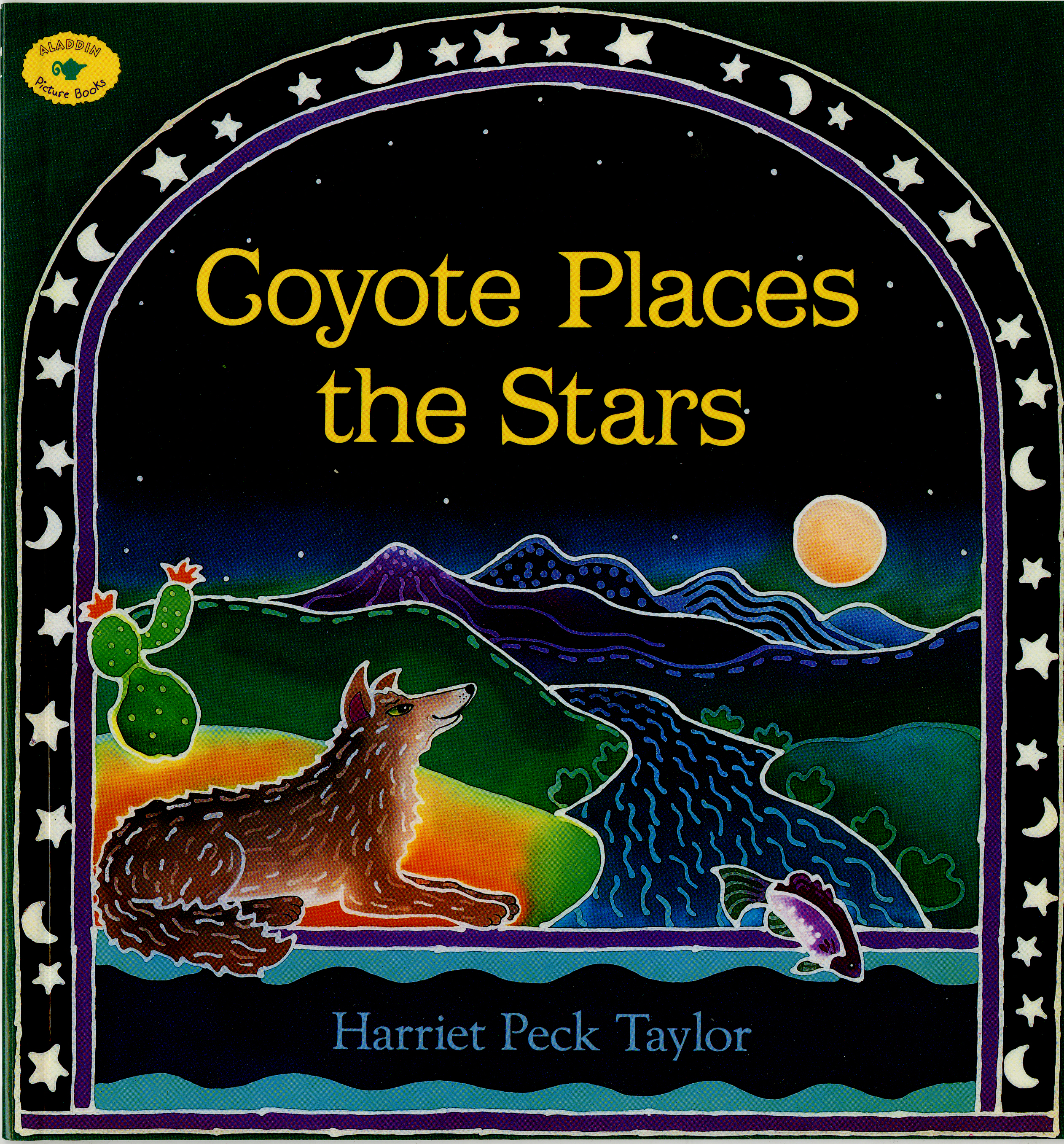
Coyote Places the Stars by Taylor
Yankton

Red Bird Sings: The Story of Zitkala-Sä, Native American Author, Musician, and Activist by Capaldi
Yup’ik

Berry Magic by Huffmon
Zuni

Turkey Girl: A Zuni Cinderella Story by Penny Pollock, illustrated by Ed Young (1996)
A poor girl herds turkeys for a living in her village. When she hears of the upcoming Dance of the Sacred Bird she longs to join in the festivities. The turkeys dance around her and suddenly she is clean and has a new dress to wear. She is told to return to them before the sun sets. The girl continues to dance as the sun starts to set and then hurries home, hoping to see if her turkeys are still there. At the beginning is some background information on this story.

Go Show the World: A Celebration of Indigenous Heroes by Kinew (2018)

Fry Bread: A Native American Family Story by Kevin Noble Maillard, illustrated by Juana Martinez-Neal (2019) **Author is member of the Seminol Nation**
All the smells, sounds, and tastes of fry bread are shared in this story as well as how it is universal among many Native American tribes. A recipe to make your own fry bread is included in the book as well as a history of the bread.

Thirteen Moons on Turtle’s Back: A Native American Year of Moons by Bruchac (1997)

We Are Water Protectors by Carole Lindstrom, illustrated by Michaela Goade (2020) **Author is a member of the Ojibwe Nation and illustrator is a member of the Tlingit and Haida Indian Tribes of Alaska**
A young girl talks about how important it is to protect the earth and the animals who cannot protect themselves against the advancement of human technology upon the planet. She mentions how important water is for all life and then how the “black snake” the oil pipelines are crossing the earth and hurting nature. While the author is Ojibwe, she writes how many Native American tribes are coming together to protect the planet. At the end of the book is more information about why it is important to have clean water and take care of the planet as well as the role Native Americans have played in being a voice for the planet.

